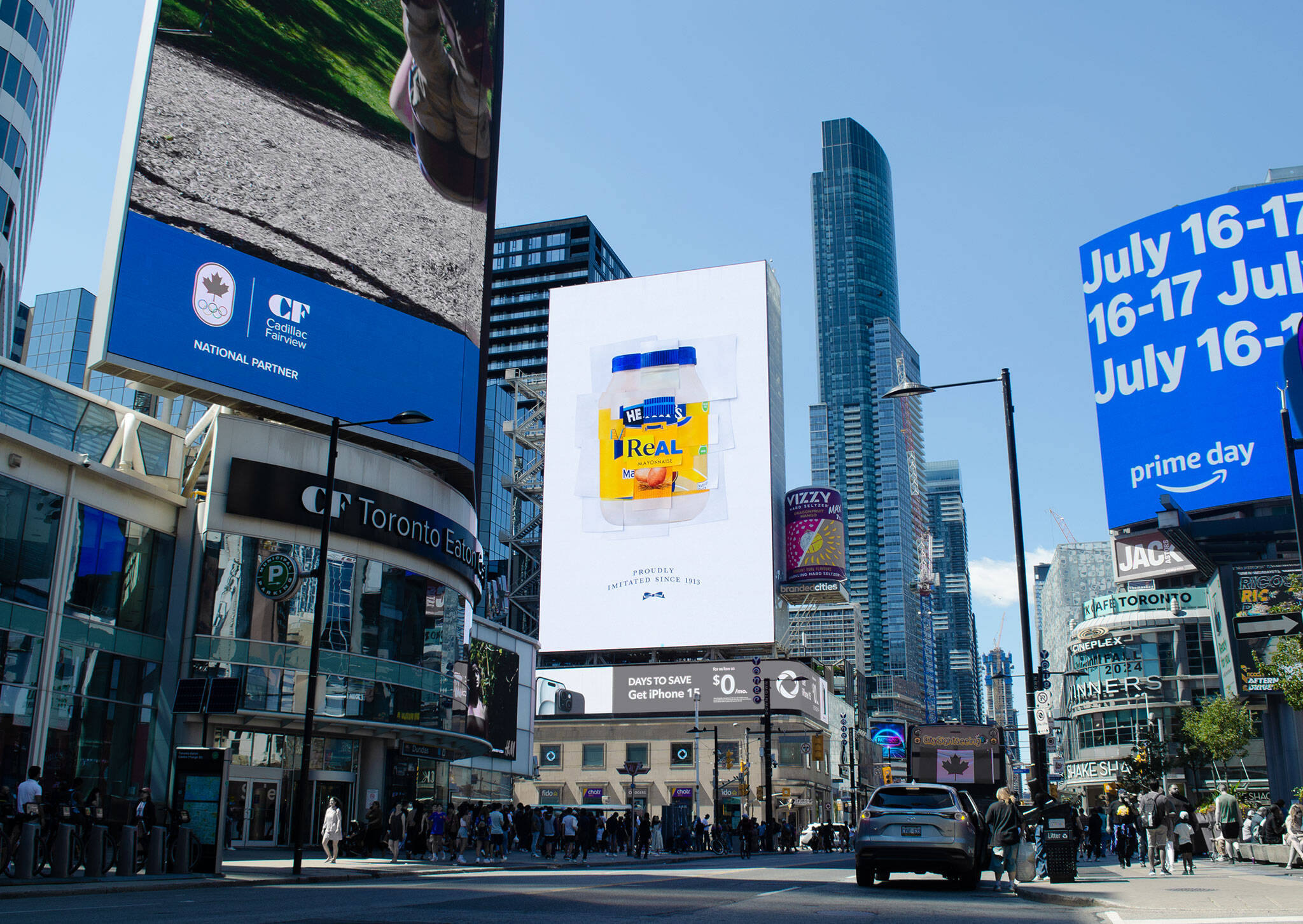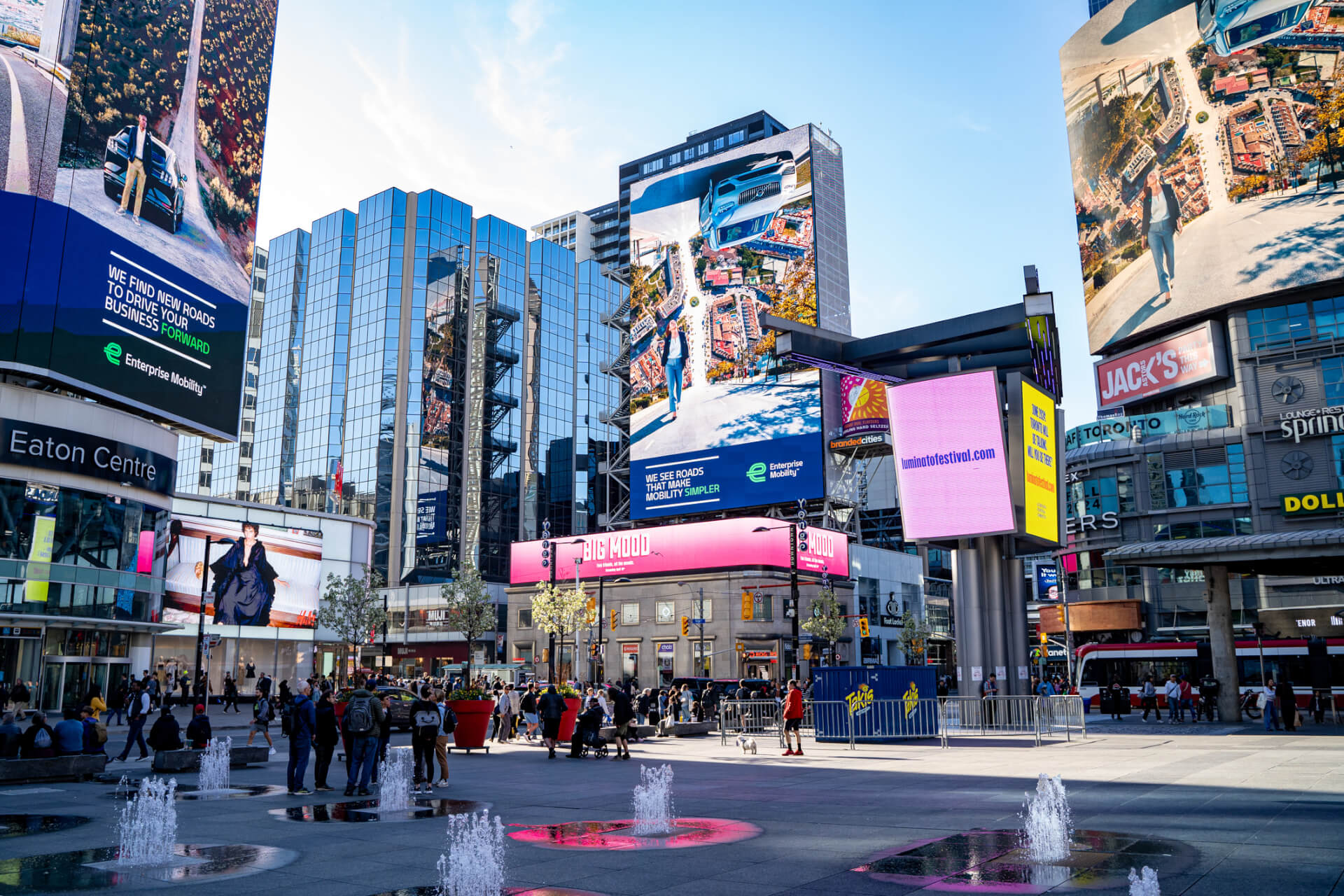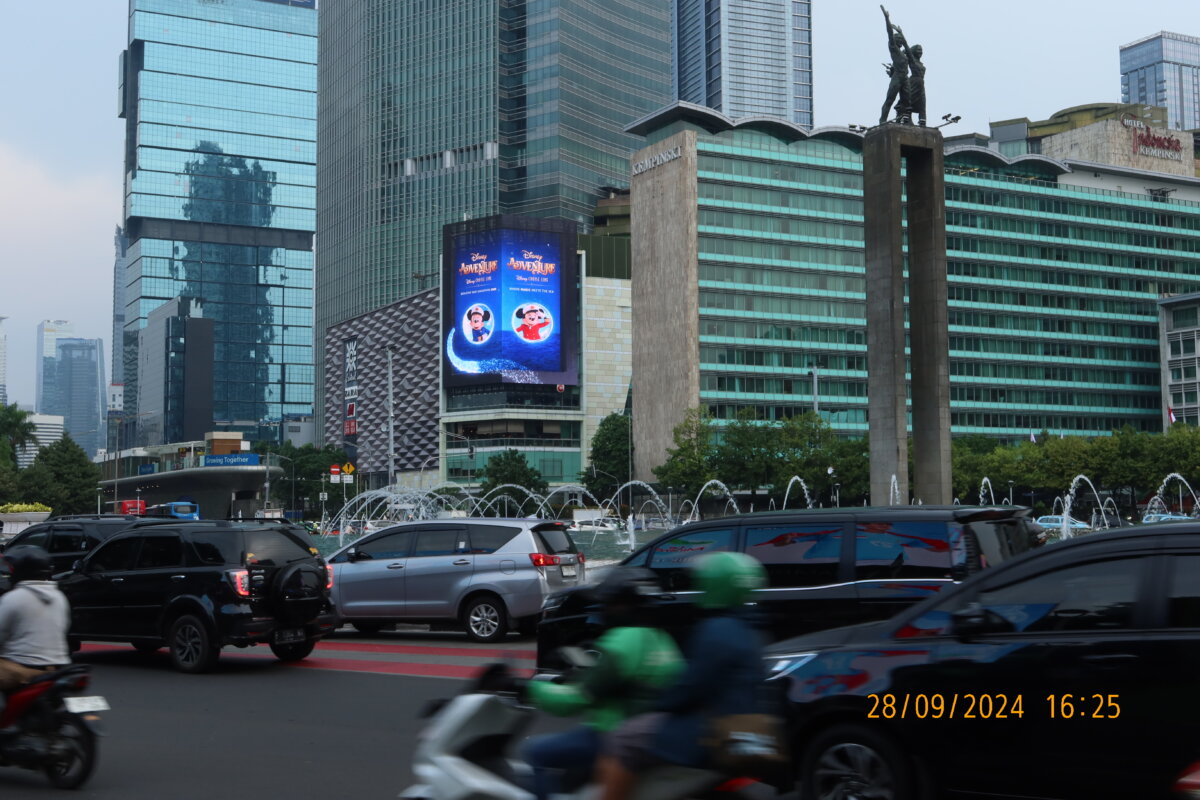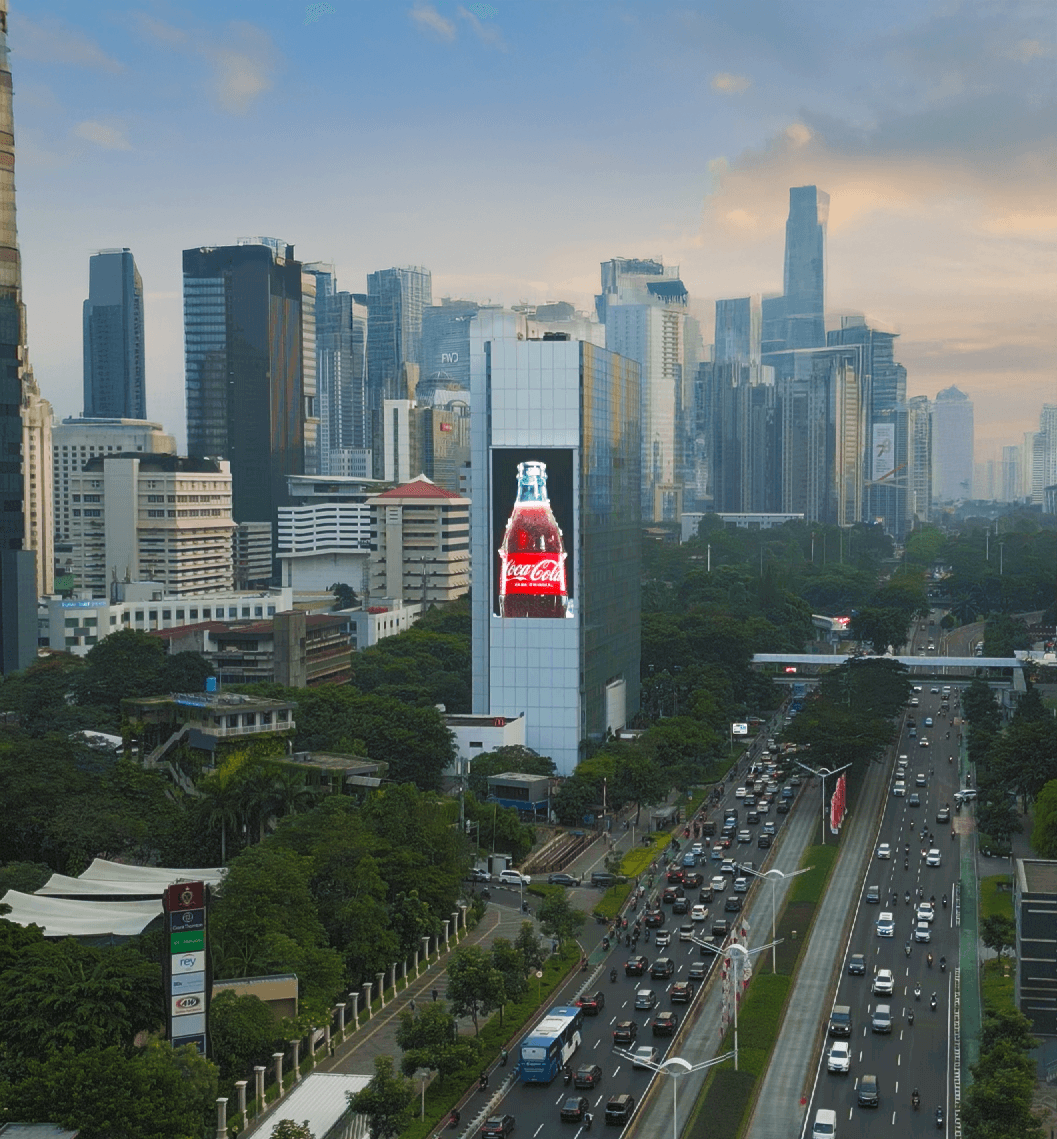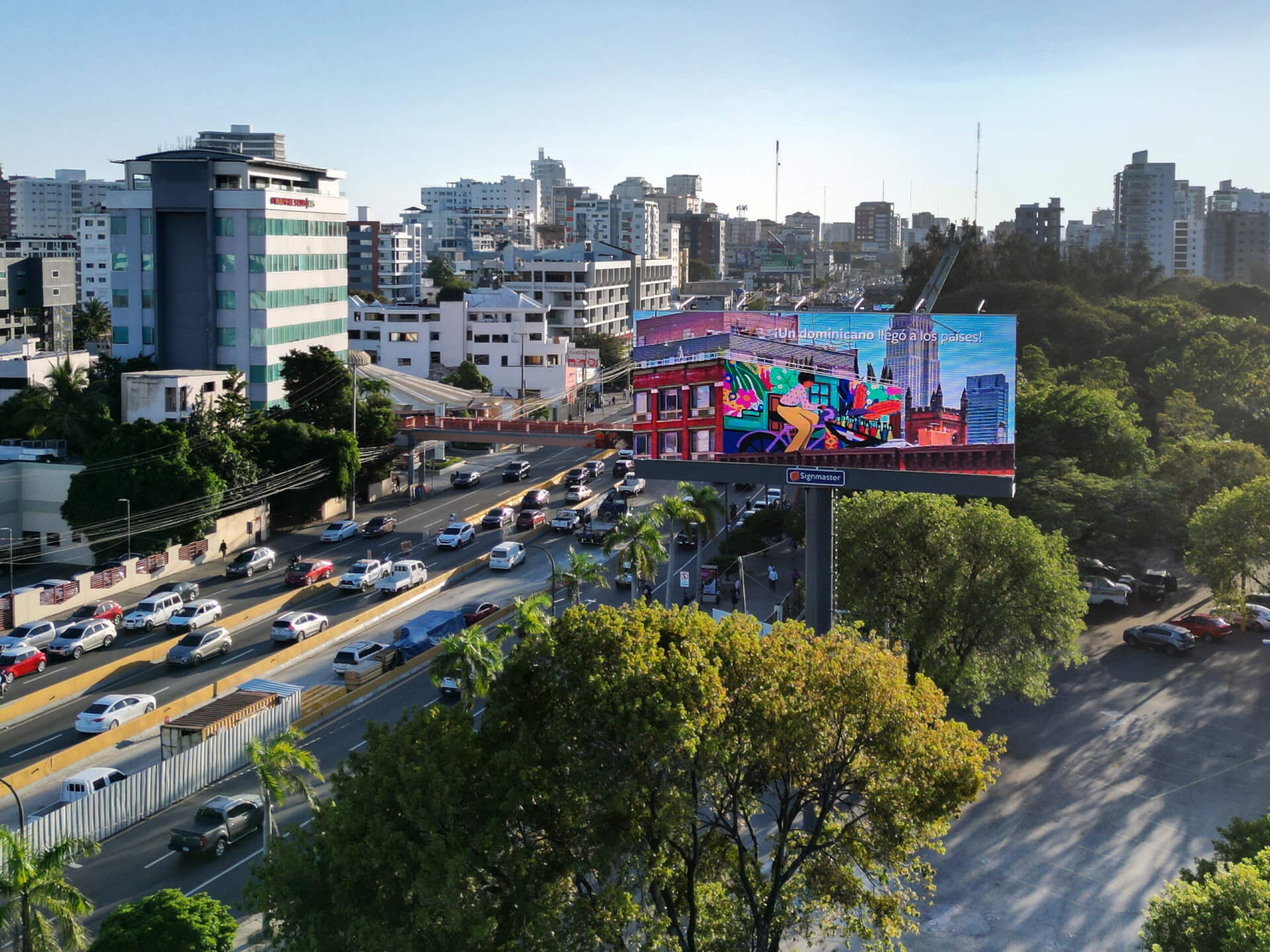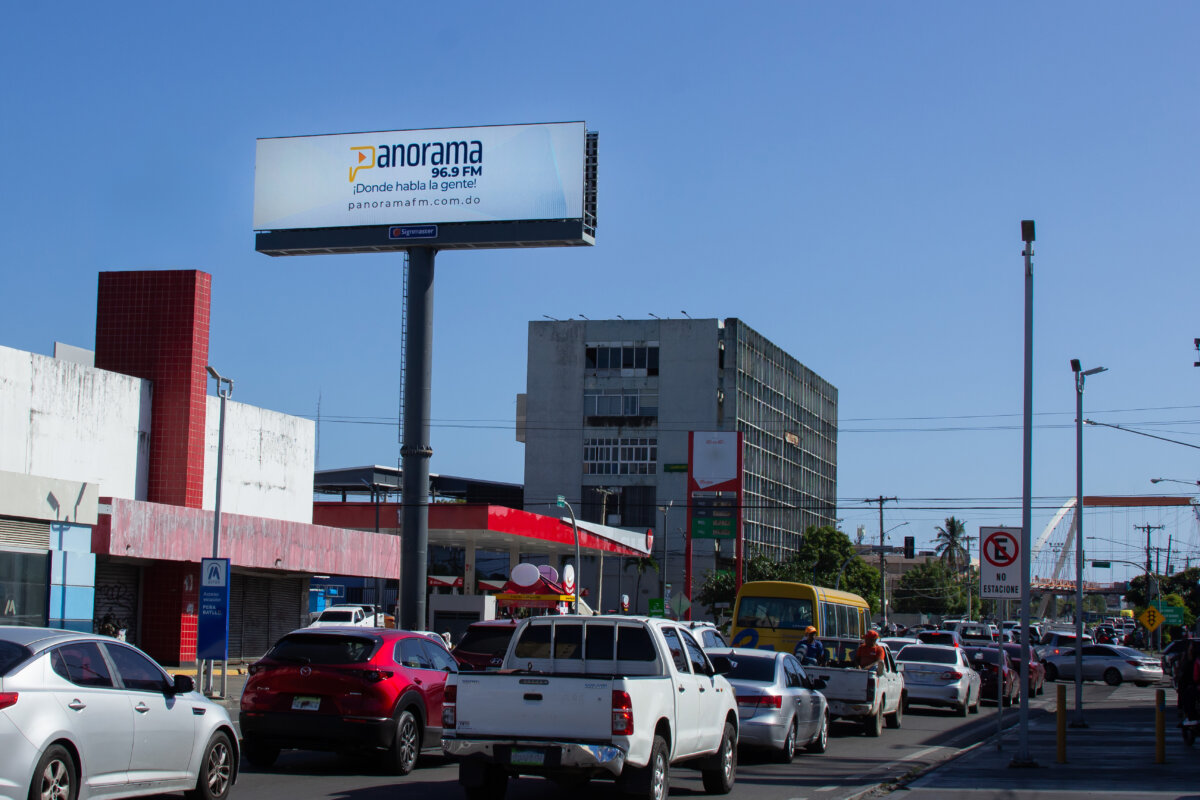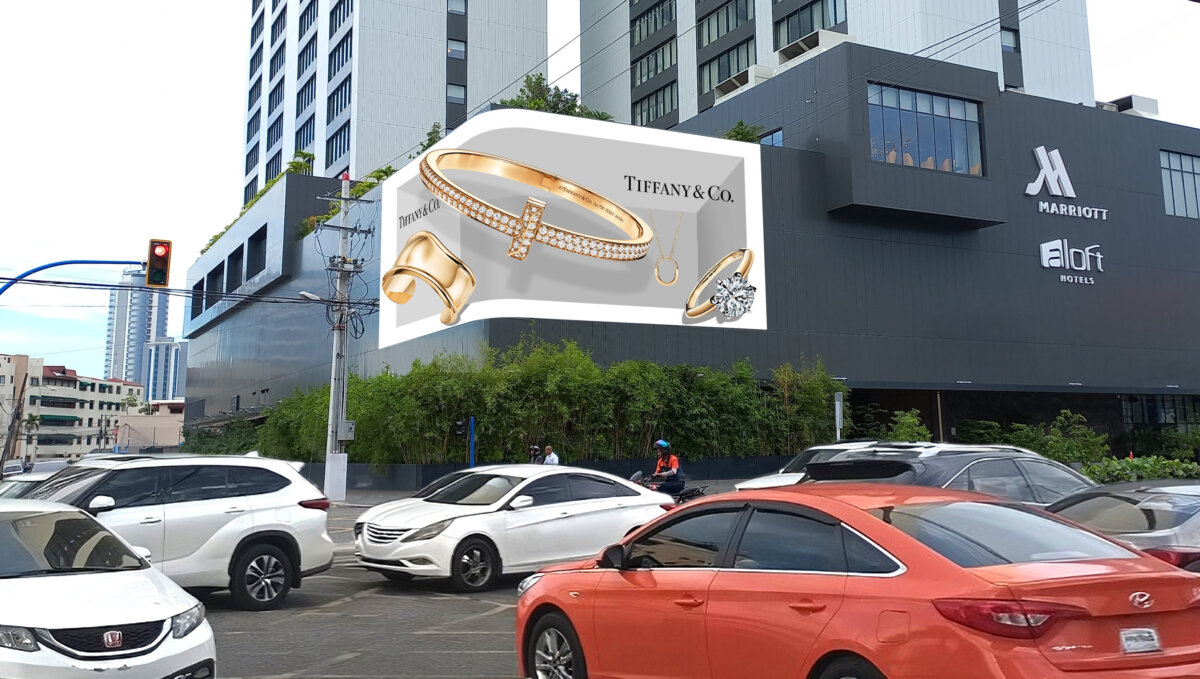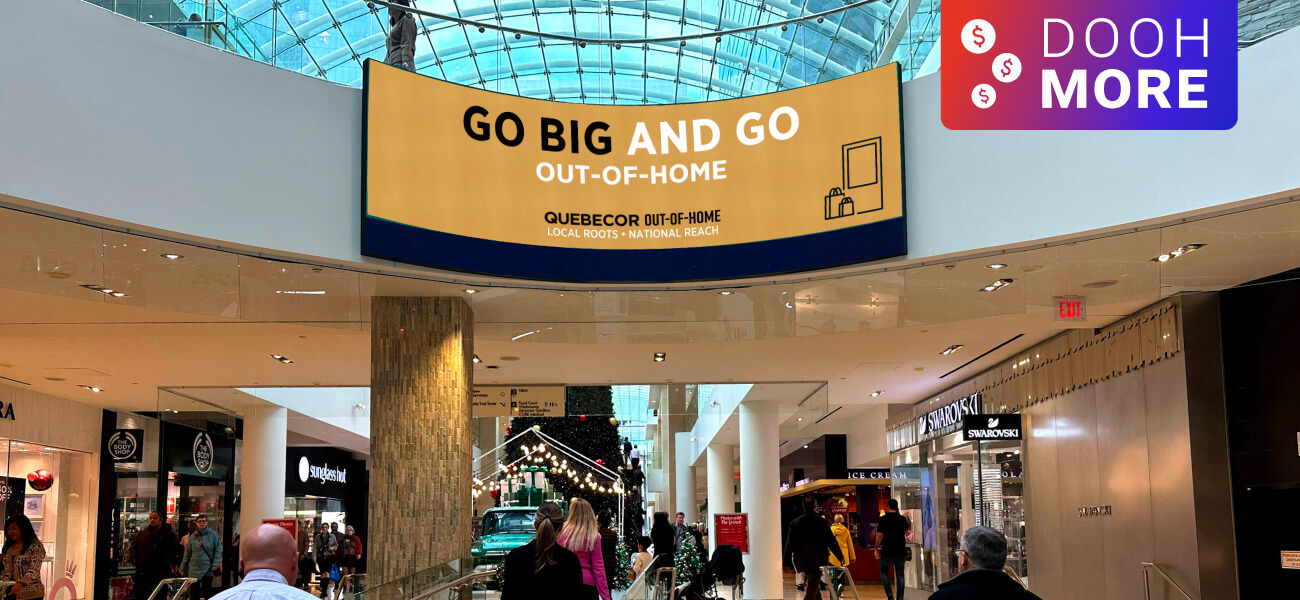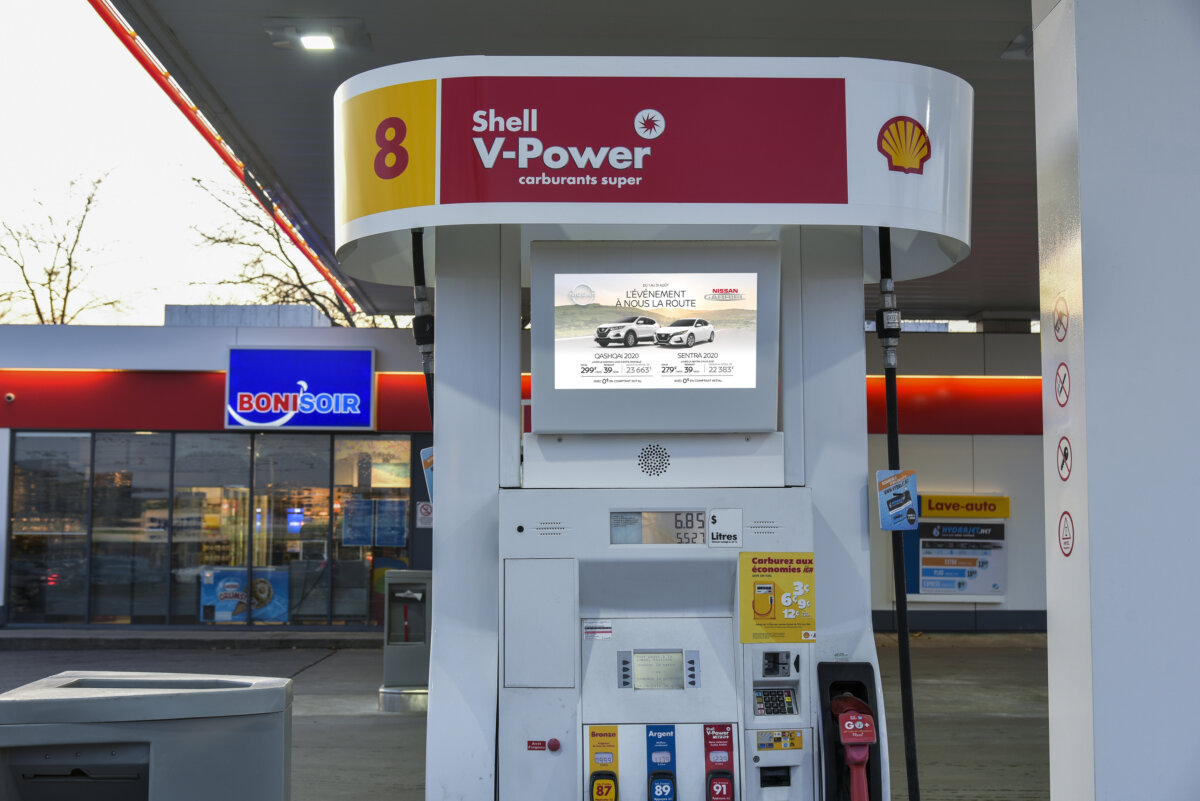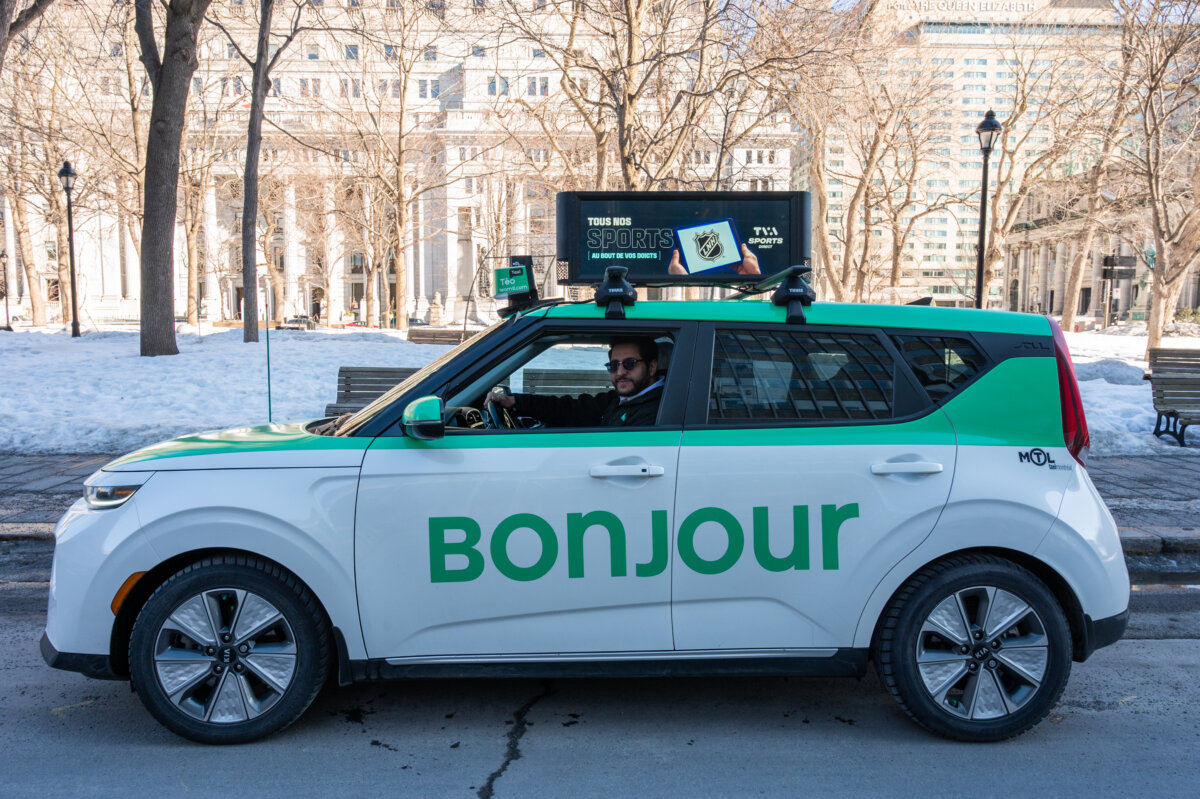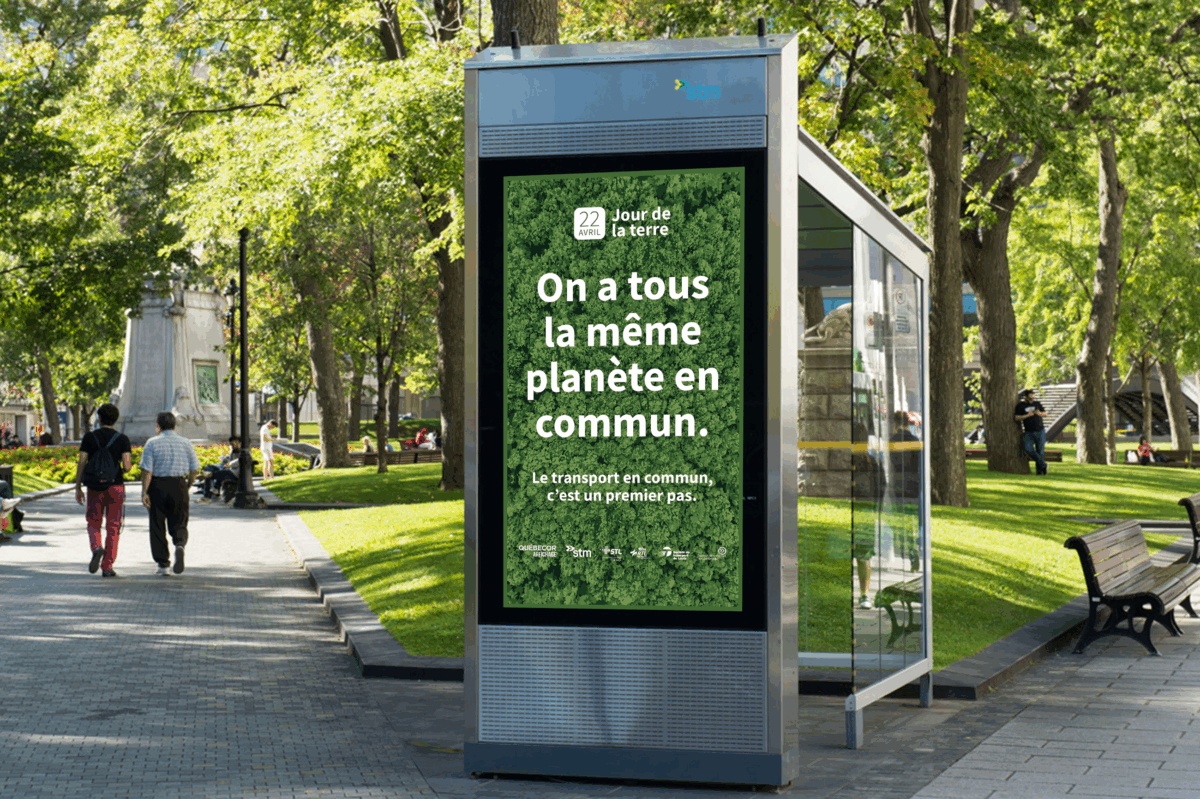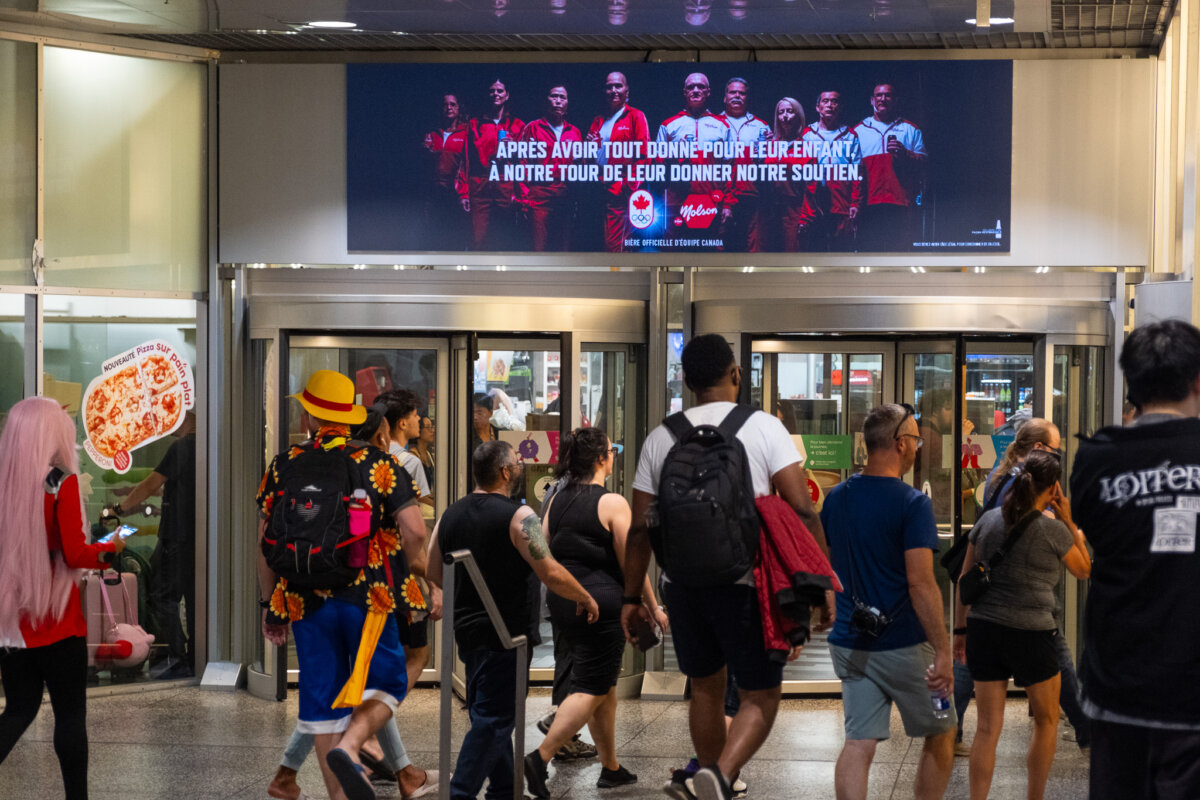| October 11, 2021
Our 25 Favourite OOH and Billboard Ads of 2024
As we look back on 2024, it’s impossible not to marvel at the creativity and innovation that lit up the world of out-of-home (OOH) advertising. This year brought us clever strategies, striking visuals, and campaigns that turned everyday spaces into engaging experiences.
From innovative 3D billboards to campaigns that sparked conversations and captured attention, OOH reminded us why it’s one of the most impactful and creative advertising channels out there. Let’s take a look at some of the standout OOH and billboard campaigns that defined the year.
Decathlon turned outages into adventures
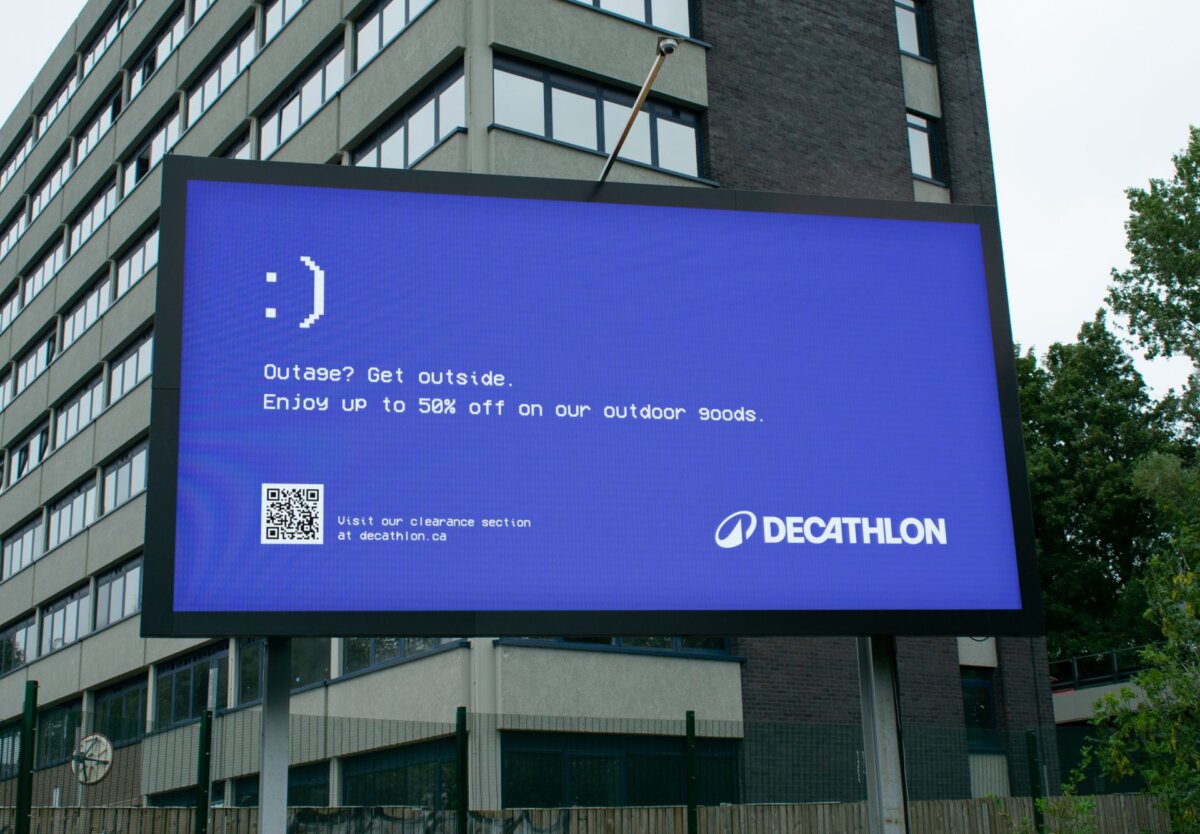
When the world was hit by a major IT outage in July, sporting goods retailer Decathlon turned a tech fail into a win with a witty DOOH campaign. Mimicking Microsoft’s error screen message (infamously dubbed the ‘blue screen of death’), the brand switched its OOH buys within 24 hours of the crisis. The result? Ads that playfully urged: “Outage? Get outside.”
The campaign doubled as a promotion, offering 50% off outdoor gear and directing viewers to shop online via a QR code, reaching millions of Canadians in the process. Developed by Rethink and executed with the help of Cossette Media, the initiative turned a widespread disruption into a creative opportunity, proving that when screens go dark, the outdoors is always open.
NYC Landmarks60 Alliance and OUTFRONT Media tested NYC knowledge, one question at a time
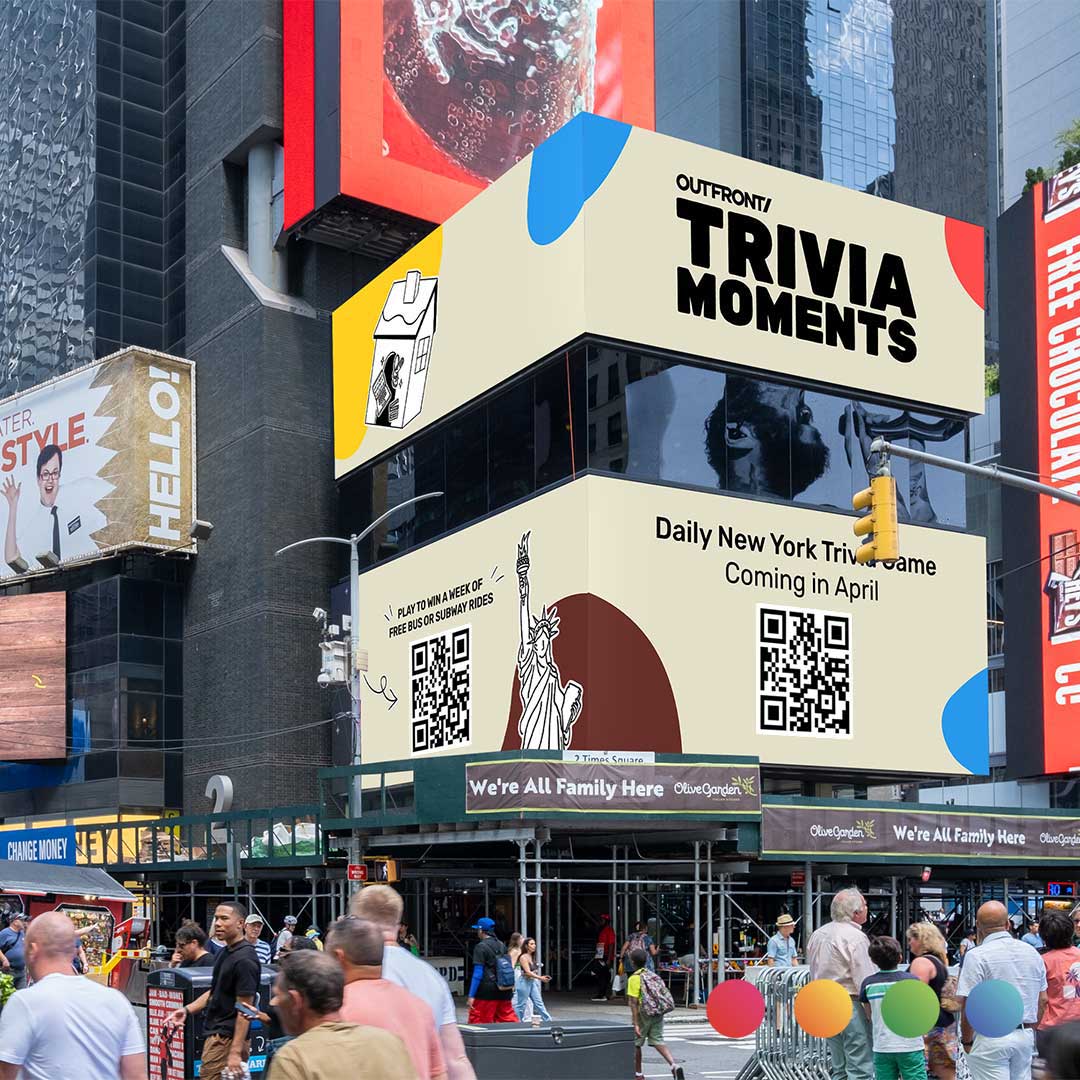
New Yorkers put their Big Apple knowledge to the test with a citywide trivia campaign launched by the NYC Landmarks60 Alliance and OUTFRONT Media. Celebrating the 60th anniversary of the NYC Landmarks Law, which introduced more widespread historic preservation, the seven-month long Trivia Moments competition displayed daily questions related to the city’s iconic sites and rich history.
The DOOH displays were activated on digital screens across the NYC’s five boroughs, inside subway stations, and at MTA transit entrances. Trivia fanatics could scan dynamic QR codes to answer questions and learn more about historical moments. Plus, those who registered for an account could rack up points throughout the week, with top players featured on leaderboards displayed on digital screens around the city, including in Times Square. Weekly winners received a seven-day subway or bus pass valued at $34. It was a great way to educate New Yorkers and beyond on the city’s heritage in a fun and engaging way – proving that in the city that never sleeps, knowledge never takes a break.
E.l.f Beauty called out inequality in corporate America
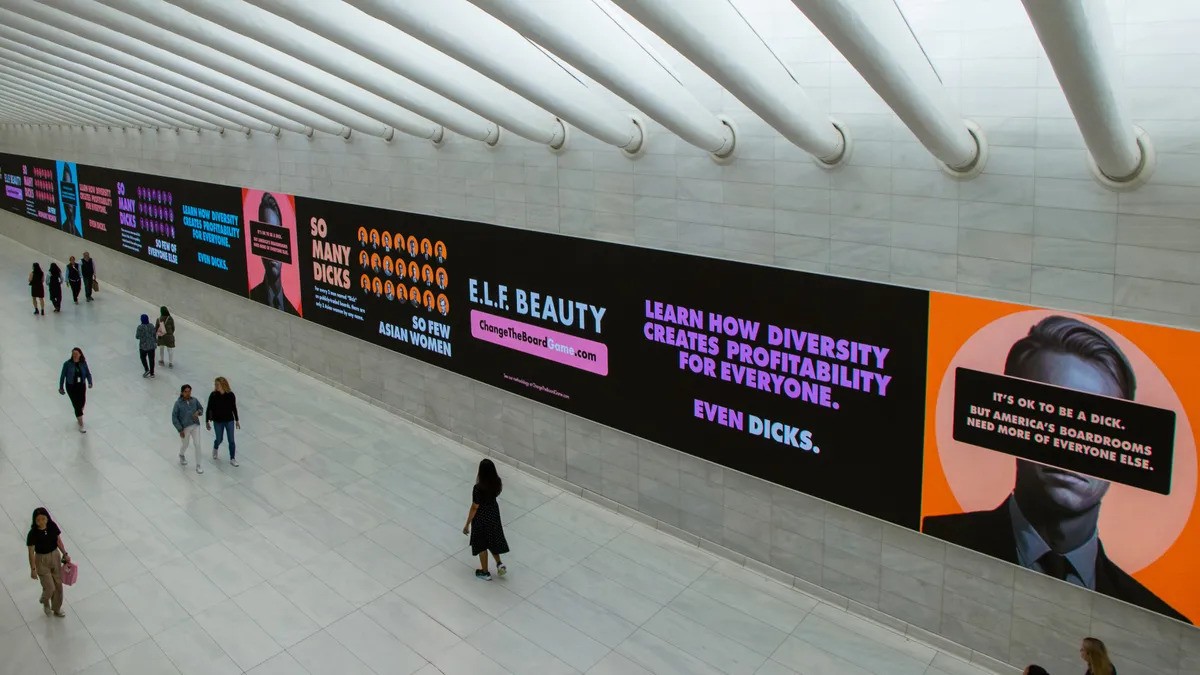
E.l.f. Beauty made waves in U.S. corporate boardrooms with its bold OOH campaign, So Many Dicks. Positioned at key transportation hubs near Wall Street, the campaign highlighted an eye-opening reality: more men named Richard, Rick, or Dick sat on the boards of U.S.-based companies listed on the NYSE and NASDAQ than women from minority groups—across nearly 37,000 board members. The headline, “It’s ok to be a Dick. But America’s boardrooms need more of everyone else,” grabbed the attention of the many analysts, brokers, and execs passing by. Developed with purpose-driven agency Oberland, the campaign is part of e.l.f.’s broader “Change The Board Game” initiative, pushing for greater corporate diversity.
Beyond the provocative message, e.l.f. also highlighted its own commitment to diversity, showcasing a board made up of two-thirds women and one-third diverse representation—one of only four publicly traded U.S. companies to achieve this milestone. The payoff has been impressive, with e.l.f. becoming one of the fastest-growing companies on the NYSE, its stock soaring over 1500% in just five years. At a time when many companies were retreating from DEI commitments, e.l.f. showed corporate America not only where it was falling short but also the significant rewards that come with embracing diversity and change.
LiveOnNY proved that sometimes, what’s missing speaks volumes

LiveOnNY, a nonprofit dedicated to advancing organ and tissue donation, asked New Yorkers to help the city “live on” by becoming organ donors. Running for three months across the New York City area transit services, including Metro-North Railroad, LIRR, and the subway system, the public service OOH campaign gave the iconic “I Love NY” logo a twist by removing the heart altogether. Instead, the message simply read: “New York needs organ donors.”
It was a bold, straightforward approach that captured attention and delivered a powerful call to action. Created with DeVito/Verdi advertising agency, the campaign showed that sometimes less really is more. We heart this message.
Nike’s NYC Marathon campaign was miles ahead
Nike may not have officially sponsored the NYC Marathon, but they sure owned it with their savvy OOH campaign. While other brands focused on promotion, Nike understood what really matters: emotional connection. They kept it simple, featuring Nike’s signature swoosh alongside the word “Run,” creating moments that resonated with runners from the Staten Island Ferry to Central Park. The best partnerships aren’t about slapping a logo on a banner—they’re about enhancing the experience, and Nike did just that.
Despite New Balance being the official sponsor (awkward!), Nike went all in, securing prime OOH placements along the marathon route. Their clever taglines—like “Running is awful. I love it,” “People will talk about today’s commute for years,” and “You’ve come hundreds of miles to get here. Only 26.2 to go”—captured the spirit of the race and spoke directly to the runners’ journey. We appreciate how Nike didn’t try to appeal to everyone; instead, it focused on a specific audience at the perfect moment, making an authentic, memorable connection that amplified the marathon experience.
Specsavers’ airport ads were a sight to behold
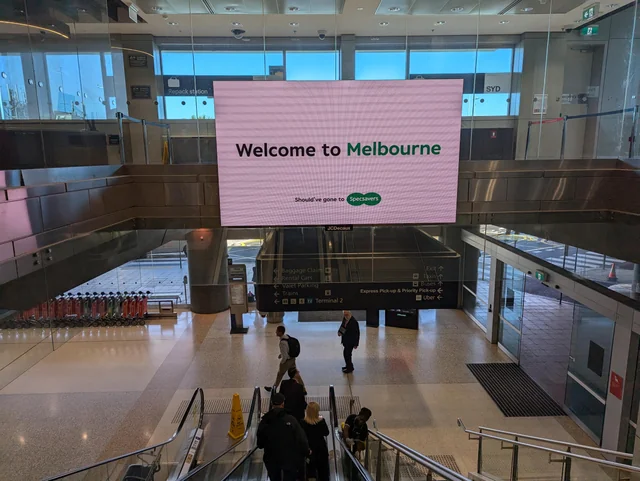
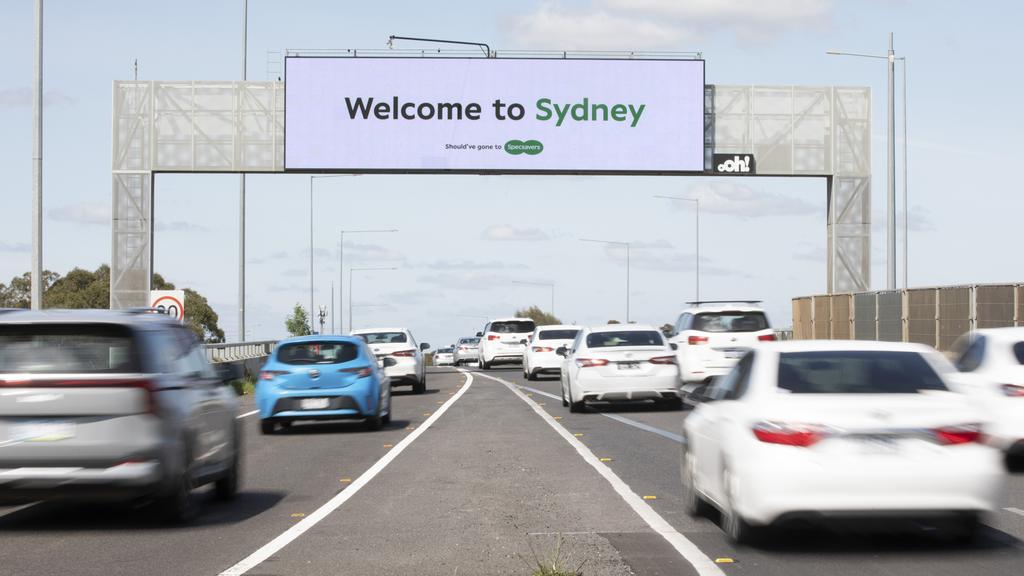
Specsavers took airport humour to new heights with its latest digital OOH campaign, catching travellers off guard with witty misdirection. At Sydney Airport, a “Welcome to Melbourne” billboard had arrivals doing double takes while drivers leaving Melbourne Airport faced an equally amusing “Welcome to Sydney” message. The subtle punchline? The brand’s classic slogan, “Should’ve gone to Specsavers,” was cleverly placed in smaller font to tie it all together.
This playful stunt is part of its broader Should’ve campaign, showcasing the relatable mishaps that can arise from poor vision. More than just a good laugh, it served as a timely nudge for Australians to prioritize eye health ahead of the busy holiday travel season. Specsavers has once again delivered an ad campaign with sharp wit and a clear message—proof that a little humour goes a long way in making a serious point.
Coca-Cola crushed it with its bold call to action
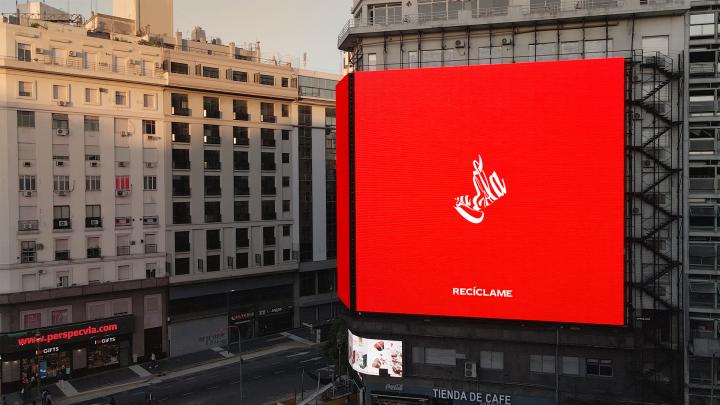
Coca-Cola turned heads with its OOH campaign, Recycle Me, turning its iconic logo into a call to action for sustainability. To inspire consumers to recycle, the soft drinks brand reimagined its famous logo by mimicking the look of real crushed Coke cans, with each OOH display featuring a unique “crushed” design. It’s a bold, creative way to make recycling part of the Coca-Cola experience while showcasing the brand’s commitment to its ‘World Without Waste’ strategy.
Developed by WPP Open X and led by Ogilvy New York, the campaign made waves across OOH and DOOH platforms in Latin America, as well as in print and social media. Tying the message to the brand’s global goal of 100% recyclable packaging by 2025, Coca-Cola proved that creativity can play a crucial role in driving environmental change. It was a smart way to combine product recognition with purpose, reminding us to crush, recycle, and repeat.
Babybel’s peelable 3D billboard was anything but cheesy
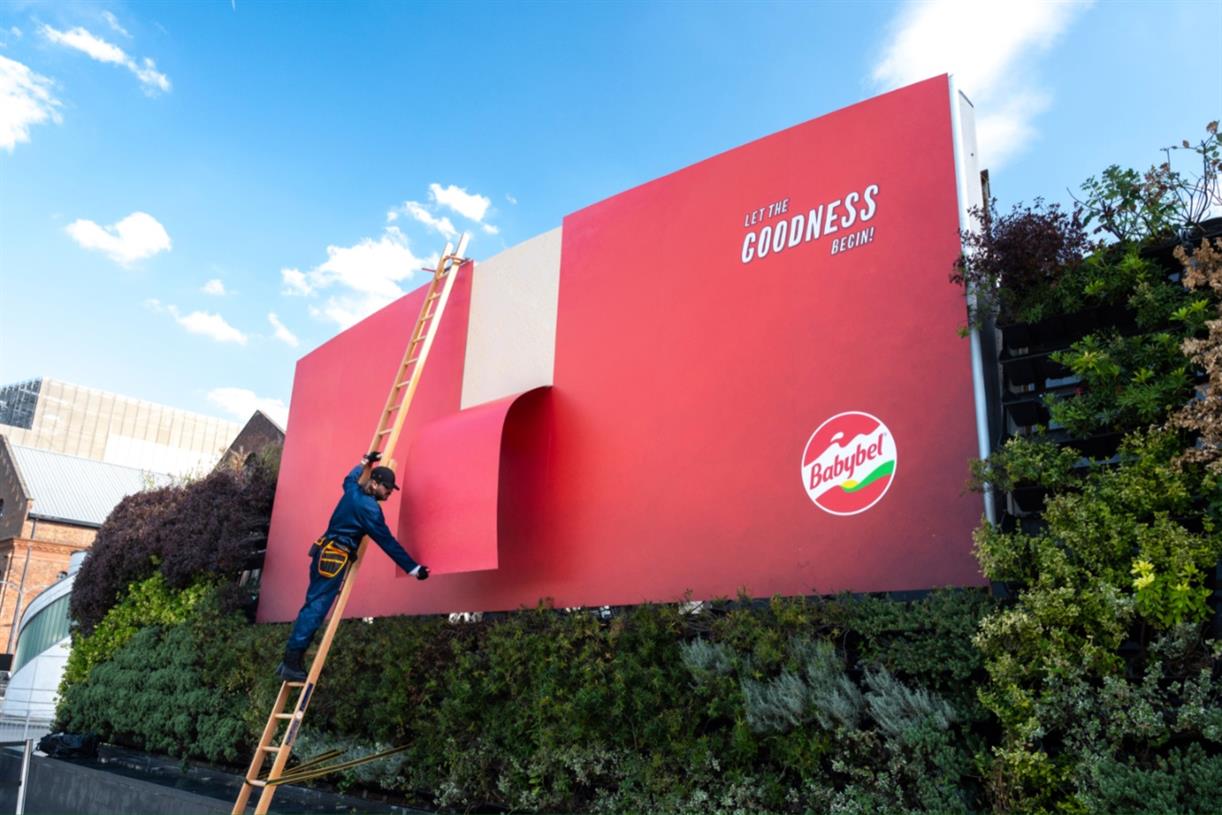
Babybel took “peel and reveal” to a whole new level this year with a giant 3D billboard activation in Manchester and London. As part of its Let the Goodness Begin campaign, the French cheese brand’s well-known red wax casing was transformed into a playful out-of-home experience that was hard to miss.
Partnering with BETC and Spark Foundry, the OOH ad featured an actor on a ladder dramatically peeling back the billboard to reveal the familiar Babybel cheese beneath. In our opinion, outdoor advertising works best when it’s true to the brand’s spirit, and we think this one perfectly captured Babybel’s fun nature. Not cheesy in the slightest!
KFC’s Tower Burger ads were a towering success
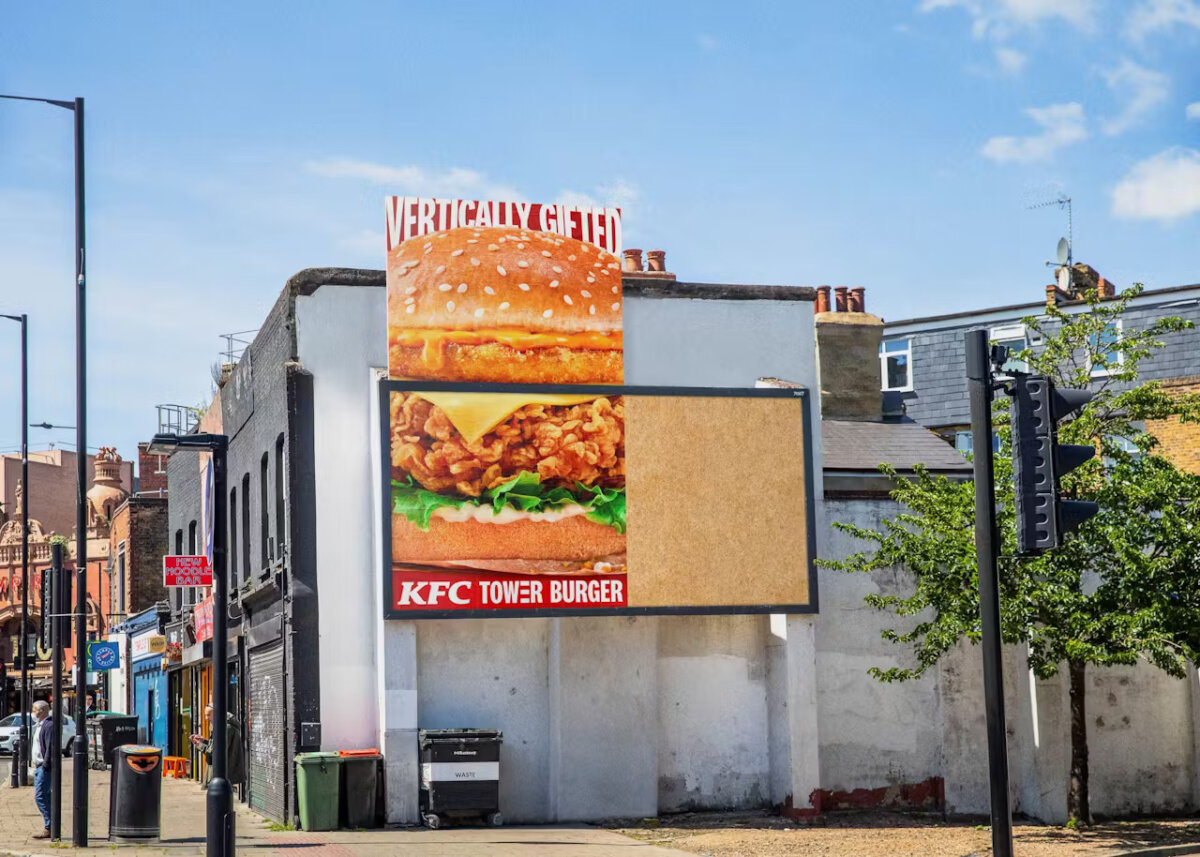
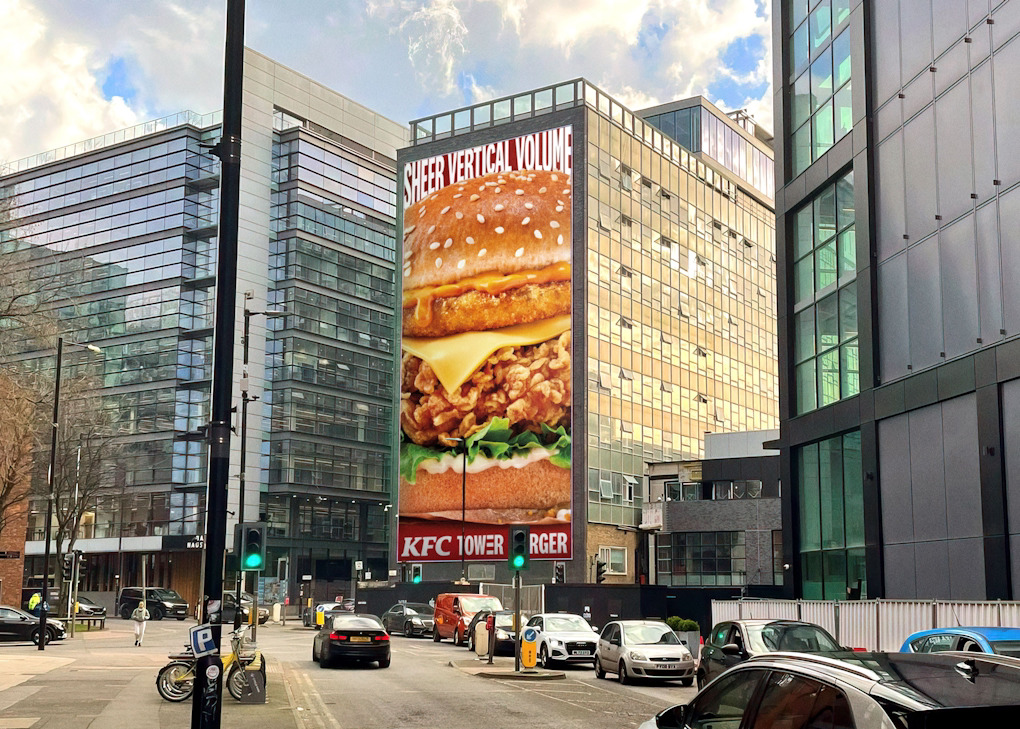
Fast-food giant KFC thought big—literally—with its Tower Burger campaign, proving that when it comes to showcasing size, rules are meant to be broken. Launched in collaboration with Mother London agency, the campaign used special-build OOH formats to highlight the burger’s impressive stature. Vertical ads were placed in horizontal spaces to create an intentional mismatch that emphasized just how colossal the Tower Burger was.
This larger-than-life campaign was part of an omnichannel approach that spanned TV, where ads featured the disclaimer, “The following commercial is too tall for TV,” as well as social media and more. The creative approach was as bold as the burger itself, featuring a close-up of the KFC chicken fillet stacked with a hash brown and cheese. We love how the ads turned the unexpected into a standout feature, using clever media placements to grab attention and deliver the message with impact. Big media and big burgers? Consider us fans. Well done, KFC.
London’s Piccadilly Lights was triumphant with a multi-brand Gladiator activation
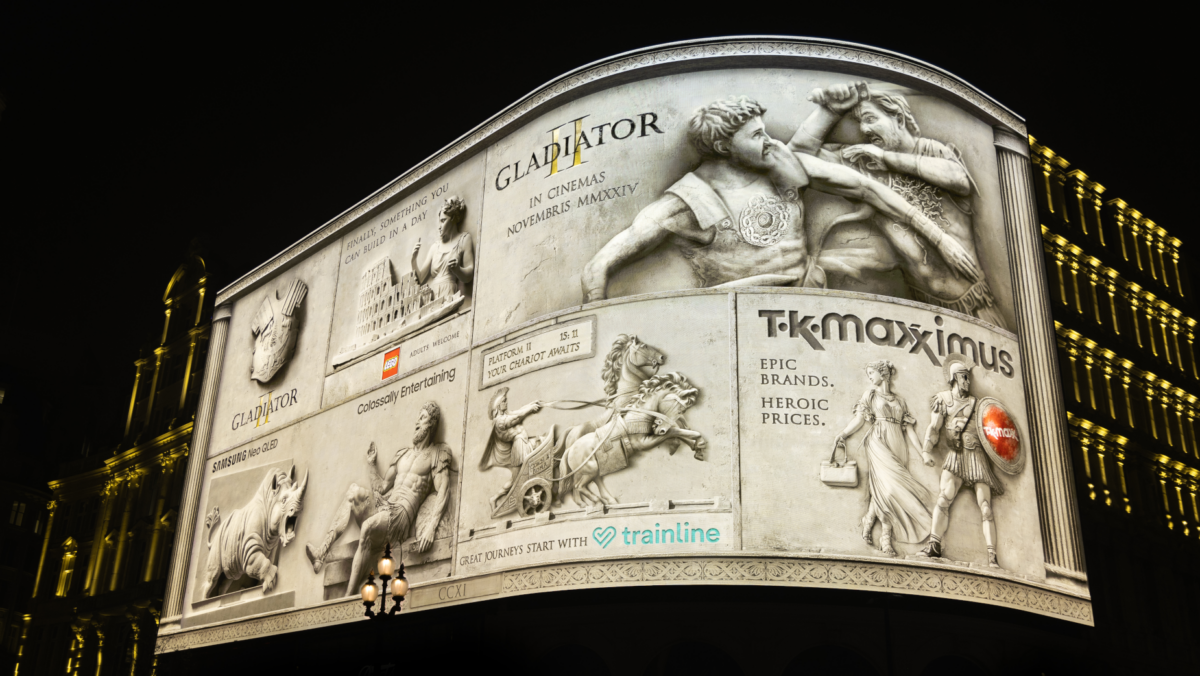
On November 8, Piccadilly Lights took a dramatic step back in time—211 AD, to be precise—as Paramount Pictures and a lineup of iconic brands transformed London’s famous screen into an eye-catching stone mosaic for the movie release of Gladiator II. The film production company worked with Samsung, Trainline, TK Maxx, and LEGO to turn their ads into striking stone artwork, reimagining modern branding through the lens of the Roman Empire.
The colossal OOH collaboration was packed with creative touches. Samsung showcased its Neo QLED TV with a gladiator mesmerized by a rhino leaping from the screen. Trainline replaced a modern train with a Roman chariot under the tagline “Your carriage awaits.” TK Maxx introduced itself as “Maxximus,” promoting premium brands at heroic prices. LEGO invited audiences to “build Rome in a day” with its LEGO Icons sets, while Paramount displayed carved visuals of the Gladiator II cast. Out-of-home advertising is one of the oldest forms of marketing, which makes this activation’s blend of ancient art and modern creativity all the more impressive. A true champion in our books.
Apple’s Made on iPad campaign stretched creativity
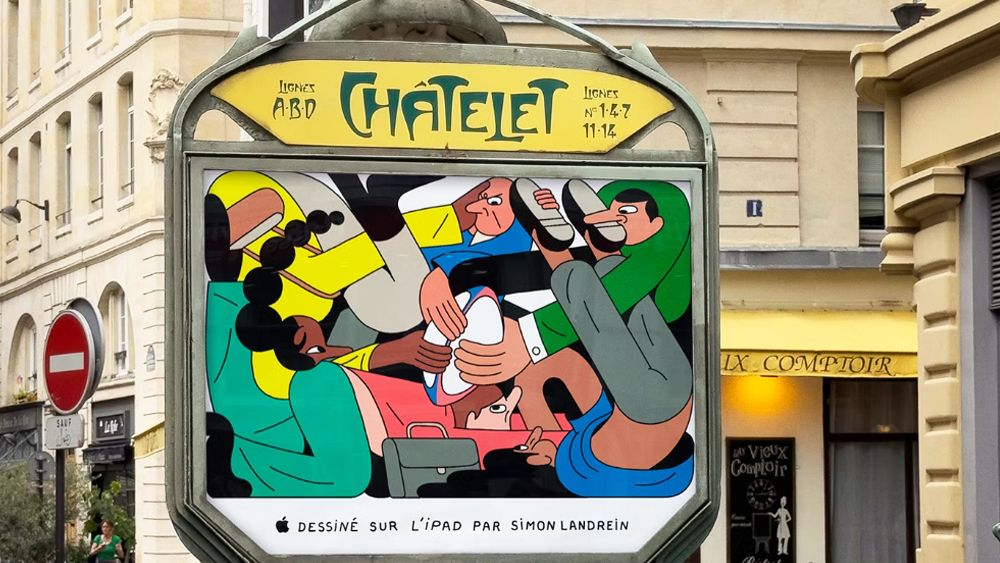
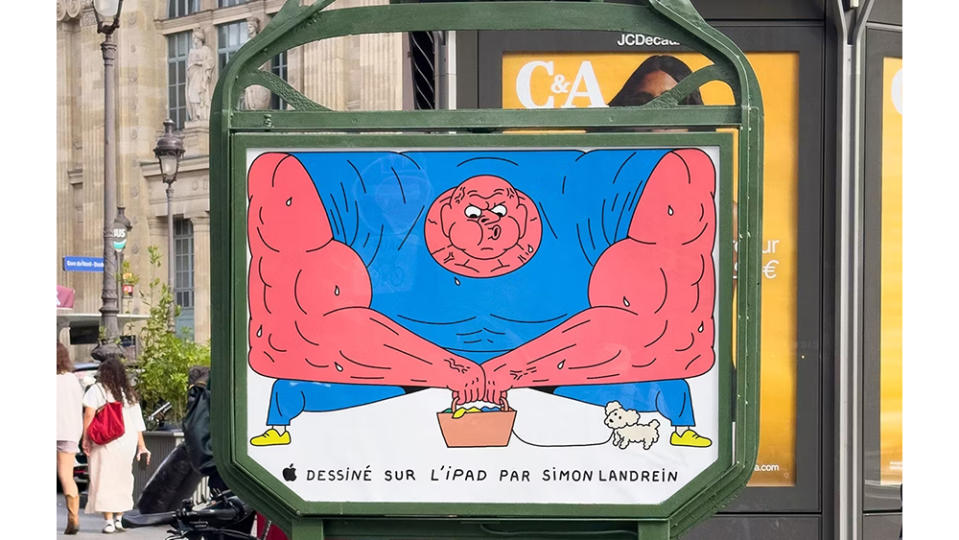
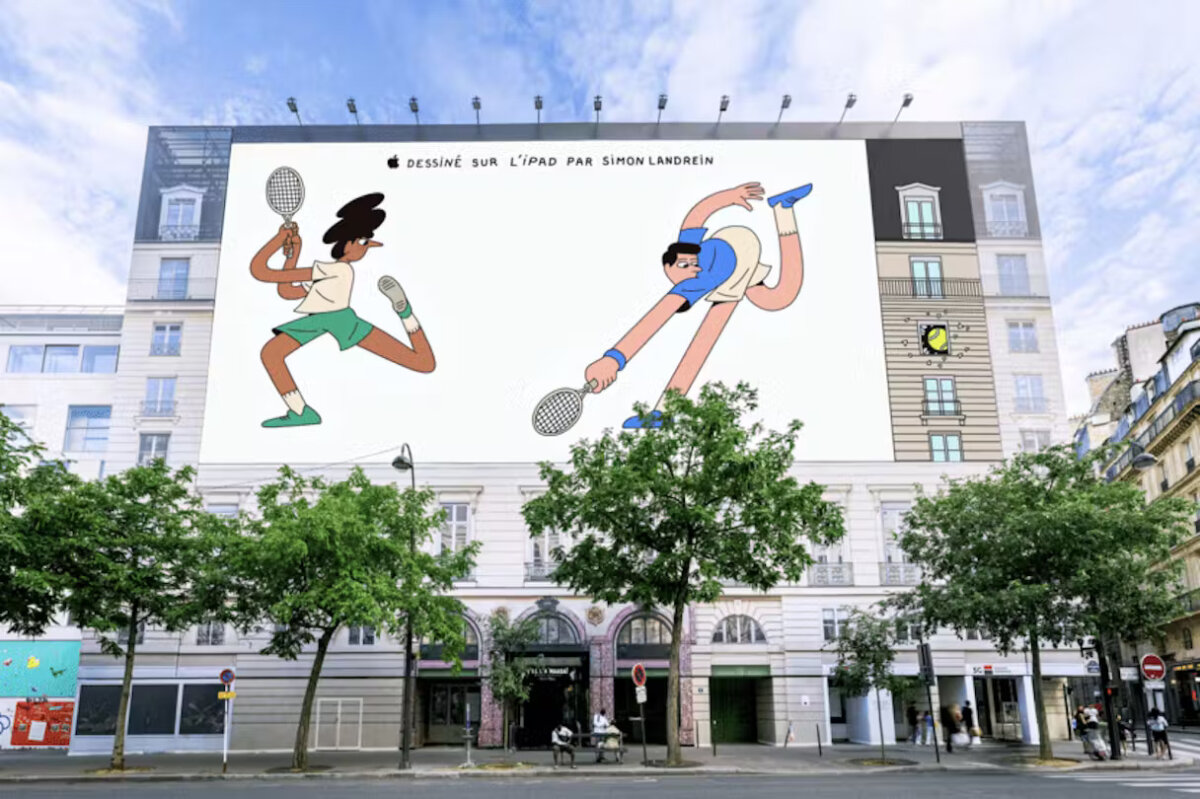
Apple may not have been an official Olympics sponsor, but its Made on iPad campaign definitely stuck the landing when it came to showcasing the product’s creative potential. Timed to coincide with the Paris 2024 Games, this OOH activation showcased 23 quirky illustrations by French artist Simon Landrein across billboards in Paris and Marseille.
The vibrant ads featured bendy, stretchy “athletes” engaging in everyday activities with an athletic twist—think grocery weightlifting or tennis. While the campaign avoided directly mentioning the Olympics, the sporty themes cleverly nodded to the event, proving you don’t need to name-drop to make an impact. With a mix of humour, striking visuals, and contextual timing, Apple claimed gold in the OOH game without needing an official sponsor spot.
ZipRecruiter’s election-themed ads got our vote
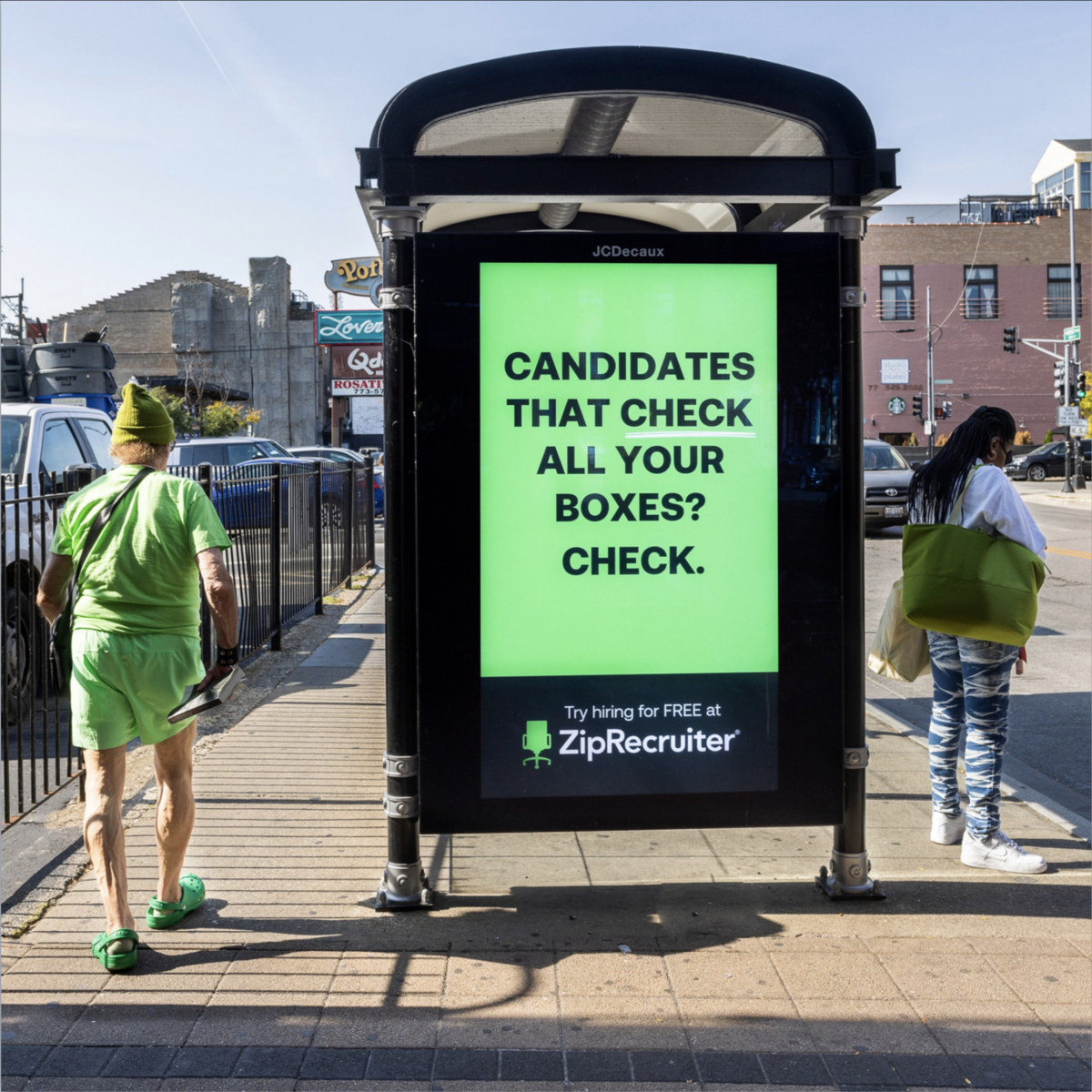
Our list of this year’s best OOH and billboard ads wouldn’t be complete without mentioning the U.S. election (don’t worry, we’re steering clear of political commentary). What we will highlight is how ZipRecruiter took the phrase “right person for the job” to new heights with its election-themed OOH campaign, proving that even hiring ads can stand out during a busy political season. While many brands steer clear of election-related content, the hiring platform cleverly used the moment to highlight the importance of finding the right candidate—whether for public office or the workplace.
We loved how the brand stayed timely and relevant without aligning with any political party. The campaign struck just the right balance, using smart, contextual messaging to engage audiences during a time when candidates were top of mind. Navigating election season in advertising is no easy task, but ZipRecruiter delivered a bold and brand-safe strategy. This campaign gets our vote for making the most of the moment.
The Ordinary’s skincare billboards were anything but ordinary
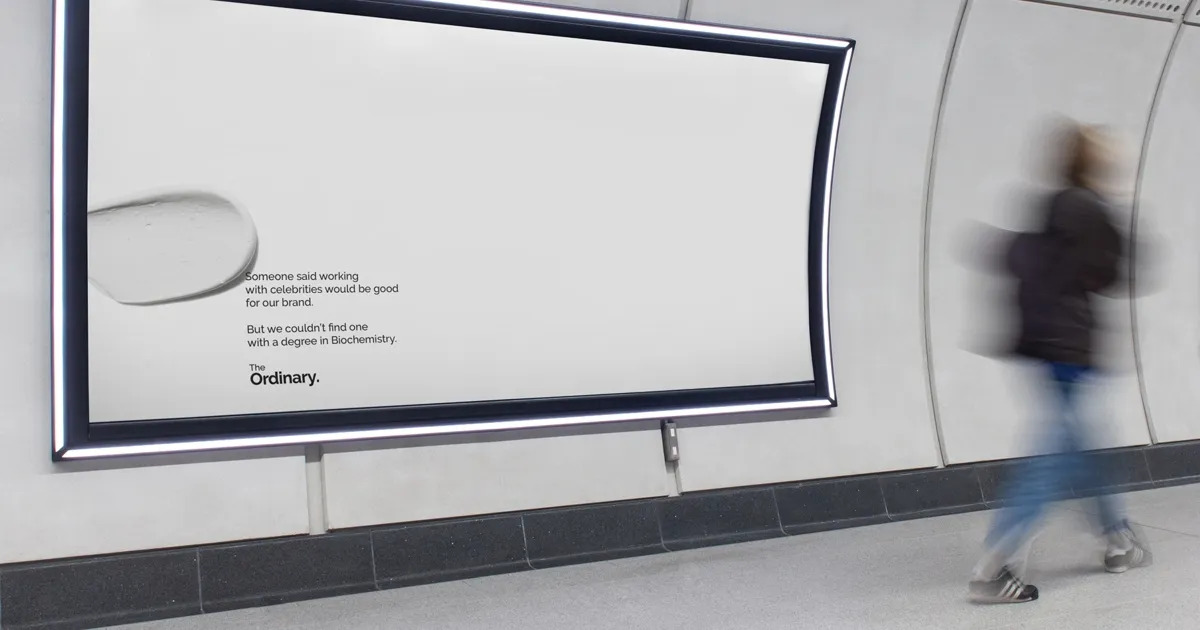
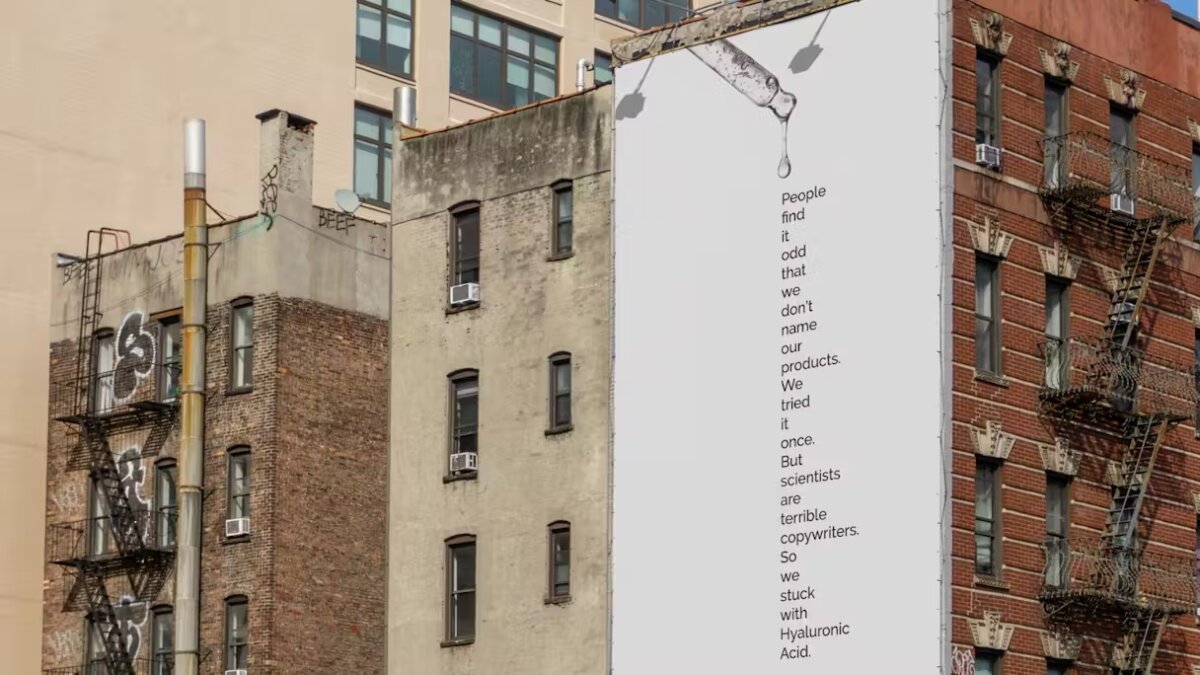
Skincare and beauty brand The Ordinary challenged traditional beauty advertising this year with its outdoor advertising campaign. Instead of using celebrities or picture-perfect models like most skincare brands, The Ordinary went for bold, minimalist OOH ads that let the science behind their products take the spotlight. Partnering with creative agency Uncommon, they created text-based billboards that combined transparency with humour.
One billboard read, “People find it odd that we don’t name our products. We tried it once. But scientists are terrible copywriters. So we stuck with Hyaluronic Acid.” Another declared, “Someone said working with celebrities would be good for our brand. But we couldn’t find one with a degree in Biochemistry.” We love how the brand skipped flashy visuals and focused on clear, honest messaging, reinforcing its commitment to transparency and science. Simple can definitely be extraordinary.
Keep Britain Tidy lit up the fight against litter
Keep Britain Tidy sparked conversation and action with its interactive DOOH campaign, Box Your Butts, designed to curb cigarette litter. In partnership with VCCP London and digital experience agency Bernadette, the UK-based environmental charity tackled a common issue—discarded cigarette butts—by addressing the main reason smokers litter: a lack of nearby bins.
The campaign introduced “Butt Boxes”—portable ashtrays that offer smokers a convenient and responsible way to dispose of their cigarettes. Equipped with a smoke detector, the DOOH display triggered a special animation of Drake the Duck, the Keep Britain Tidy mascot, tapping at the screen when smokers approached. As they got closer, the ad invited passersby to press a button to receive a free Butt Box, accompanied by the line, “Cigarette butts are rubbish.” Strategically placed in a high-traffic area in Birmingham, the bold visuals and interactive design made the message impossible to ignore, encouraging smokers to rethink their habits with a practical solution.
Branded Cities celebrated Mother’s Day with the Mother of all billboards
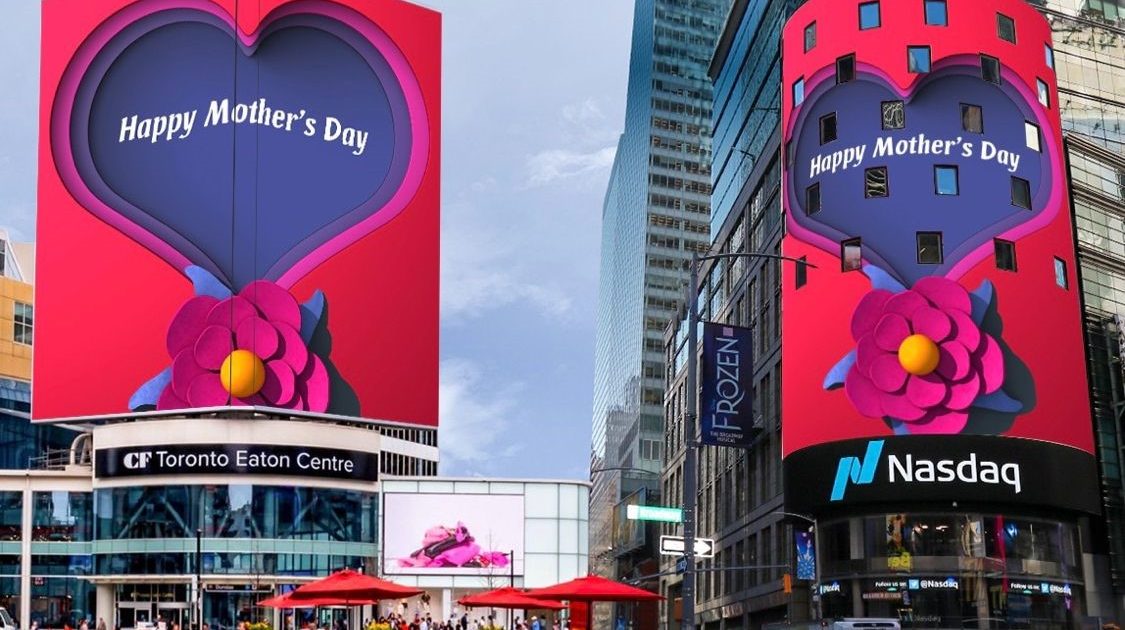
We all know that moms are superheroes, but this year, OOH specialist Branded Cities went above and beyond to remind us of this with supersized billboards celebrating North America’s Mother’s Day. With stunning 3D displays lighting up Toronto’s Eaton Centre and New York’s Nasdaq building, these digital activations delivered heartwarming visuals that struck a perfect balance between creativity and sentiment.
In addition to celebrating mothers and mother figures, these billboards remind us how OOH can do more than grab attention—it brings people together and spreads a little joy.
ESPN and NFL’s 3D billboard scored big
The NFL’s 2024 divisional team reveal was anything but ordinary, thanks to a jaw-dropping 3D billboard activation created in collaboration with BCN Visuals. Taking over the massive LED screen on the facade of Los Angeles’ Moxy and AC Hotel Downtown—the largest continuous display on the West Coast—the campaign turned sports advertising into an unforgettable visual experience.
Flying footballs and helmets wove through a futuristic, Tron-like maze, showcasing team logos and building up game-day hype. ESPN and the NFL proved that digital OOH and sports advertising the ultimate pair, blending creativity, energy, and technology to bring the game to life.
Vegemite spread the love for Taylor Swift
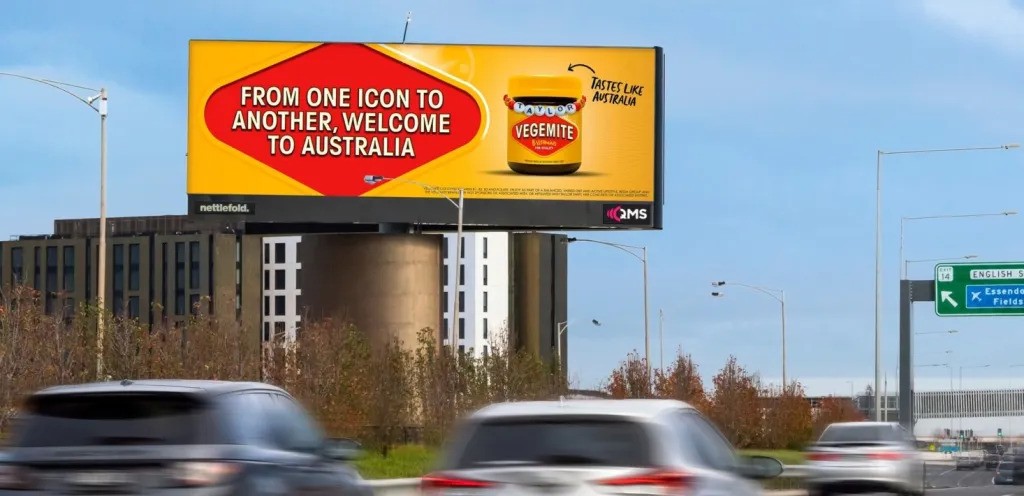
Vegemite rolled out the welcome mat for Taylor Swift in the most Australian way possible—with a clever billboard along Melbourne’s Tullamarine Freeway. As the global superstar arrived for the Australian leg of her Eras Tour, the ad greeted her with the message: “From one icon to another, welcome to Australia!” A friendship bracelet even wrapped around the beloved jar of Vegemite—a nod to the Eras Tour fan culture and the enduring tradition of Swifties exchanging bracelets.
The billboard, strategically placed on the route from Melbourne Airport to the central business district, went live at 10 p.m. on Wednesday, February 14, to coincide with Swift’s understated arrival. Showcasing the big business power of the Eras Tour, the DOOH ad highlighted Vegemite’s knack for merging national pride with pop culture. It’s not every day a breakfast spread shares the stage with a global superstar, but Vegemite delivered.
Sky Sports aced it with its tennis channel ads


Sky Sports served up something special to promote the launch of its new tennis channel, proving that static OOH doesn’t need to be boring. Working with Fallon agency, the broadcaster unleashed giant 3D tennis balls across London in a campaign that was as playful as it was unmissable.
One installation featured a massive tennis ball “stuck” in a fence, perfectly capturing the relatable moment of a shot gone wrong. Another ad recreated a towering tube of tennis balls you’d typically find at the store, only on a much grander scale. The playful designs brought tennis to life in unexpected ways, aligning perfectly with the energy and excitement of the sport. Big OOH is a hit in our books.
Hellmann’s served up the real deal
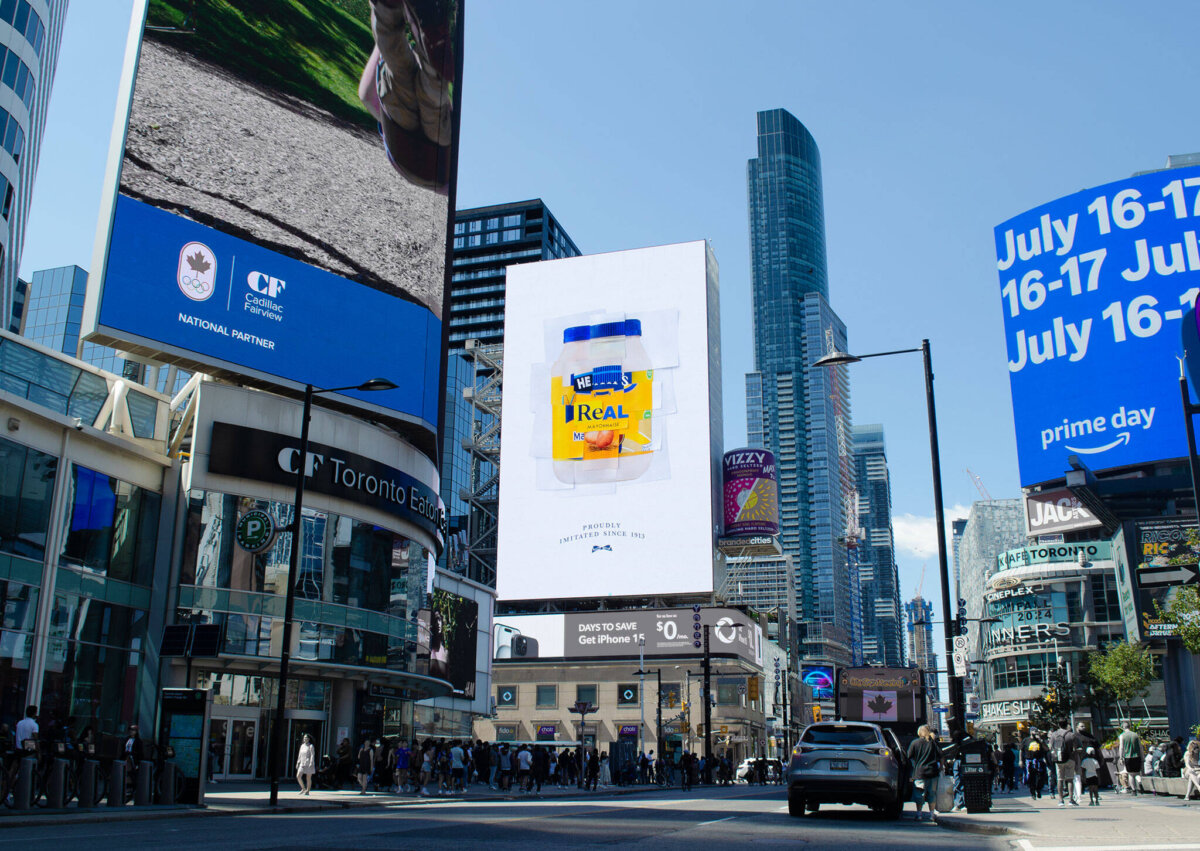
Hellmann’s made a bold move this year by putting its competitors front and center in The Imitation Jar campaign, reminding everyone that while the mayo aisle might be crowded, there’s only one true classic. With 20 lookalike jars displayed on the OOH ads, the campaign highlighted the blue-and-yellow sea of similar labels—but made it clear that imitation stops at the taste.
We love how Hellmann’s leaned into its iconic status without even showing its own label, letting its reputation and flavour speak for itself. The clever use of competitors’ branding created a visual statement that was impossible to ignore, especially for anyone who tried to find “their mayo” on the shelves. Created by Ogilvy Canada and launched in July 2024, this campaign proved that even in a sea of lookalikes, Hellmann’s still reigns supreme.
Paramount’s Mean Girls transit ad was so fetch
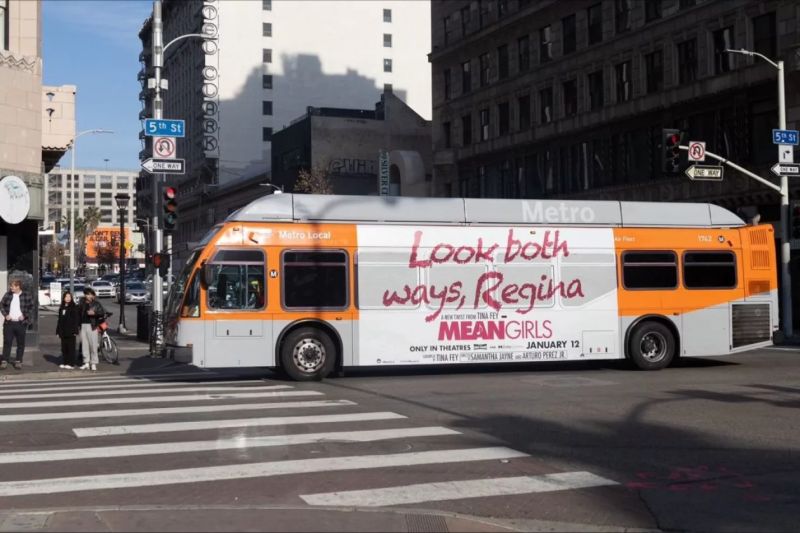
Paramount tapped into Mean Girls nostalgia with a clever OOH campaign to promote Tina Fey’s musical film remake, released in January. Buses across California were branded with the sassy slogan “Look Both Ways, Regina,” scrawled in bright pink lipstick—a nod to character Regina George’s infamous bus collision scene in the original 2004 cult classic.
While bus ads were contextual to the movie, they also served a strategic purpose. In a commuter-heavy city like LA, these transit ads delivered high visibility, reaching pedestrians, drivers stuck in traffic, and, of course, social media, where the OOH campaign quickly became a viral sensation. The use of lipstick—a signature Mean Girls element—added to the campaign’s playful authenticity, while the vibrant design proved that short copy can pack a big punch. While the original movie will always hold a special place in pop culture, this ad definitely gave it a run for its money.
Boots made a bold statement with its biggest beauty campaign yet
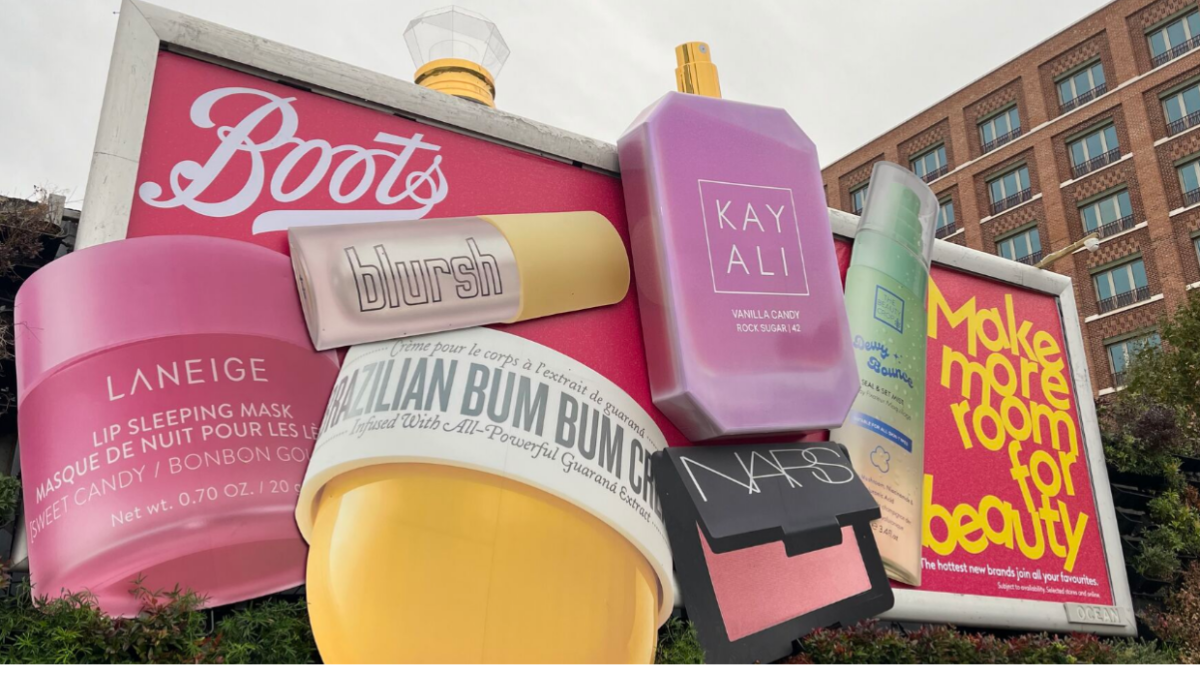

British health and beauty retailer Boots turned heads—and noses—with its latest out-of-home activation. As part of its Make More Room for Beauty campaign, the brand rolled out a special build at Westfield London featuring a 2D and 3D beauty products, including a supersized Kayali perfume bottle with a real spray mechanism that treated passersby to a sweet-smelling stroll.
Boots didn’t just stop at Westfield. From eye-popping 3D billboards at London Waterloo to a full underground platform takeover at Oxford Circus, the campaign brought beauty to life across Central London. Teaming up with EssenceMediacom, Global, WPP, and VML, the campaign marks Boots UK’s “biggest ever beauty campaign.” We love how it showcased its expansive beauty range in a way that was bold, playful, and impossible to ignore.
H&M and Charli XCX dazzled with their surprise Times Square takeover
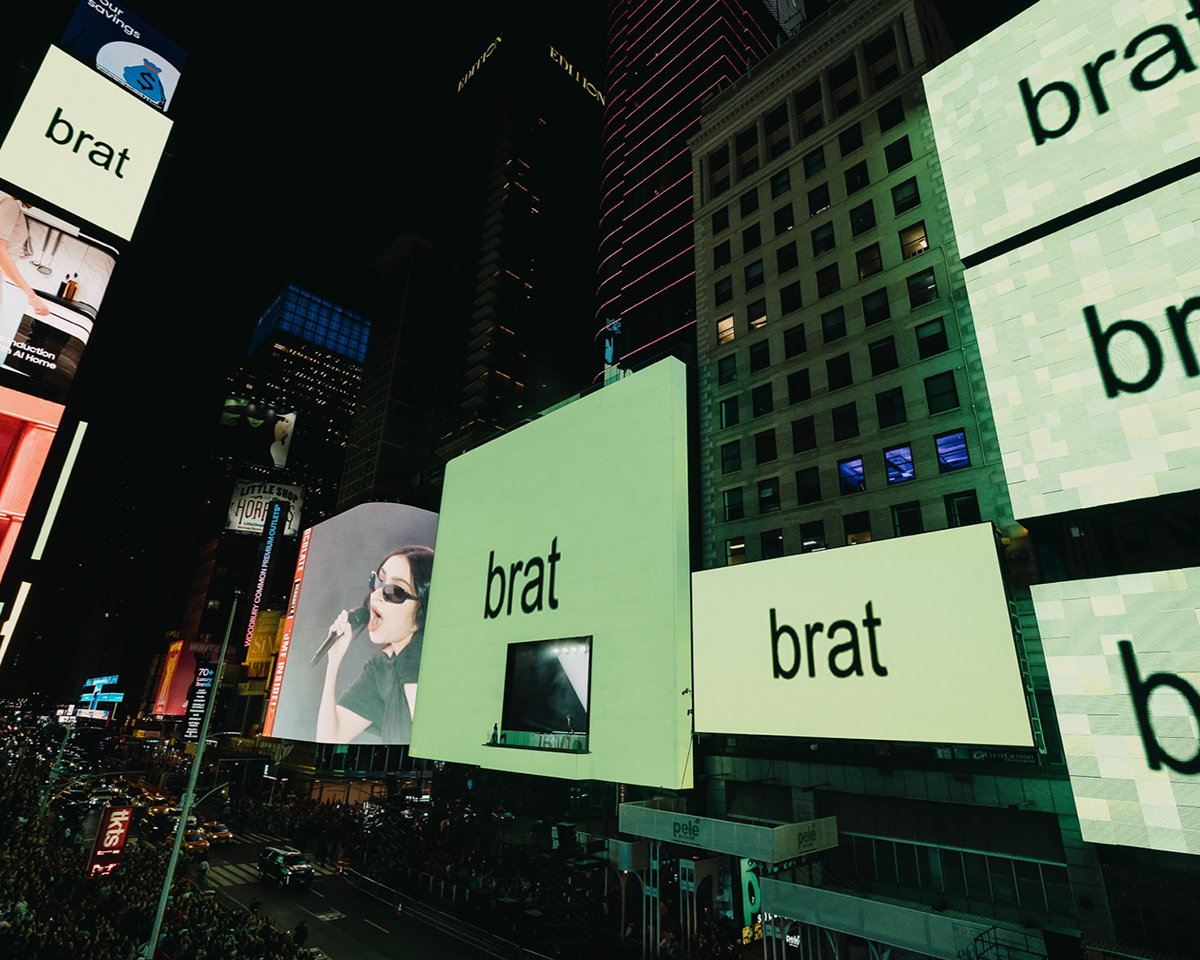
In November, H&M pulled off an unforgettable Times Square takeover with a surprise collaboration featuring global popstar Charli XCX. The event celebrated the re-opening of H&M’s flagship Times Square store and the launch of its Holiday collection, blending music, fashion, and bold OOH to create a can’t-miss spectacle.
The campaign leveraged Times Square’s iconic digital billboards, where visuals by Maximo Recio and Weirdcore dominated the screens to count down to the open-air performance on the TSX stage. With just 30 minutes notice shared via social media and in select H&M stores, thousands of fans rushed to the heart of New York City to catch the show.
After the performance, the Times Square screens continued to dazzle with visuals honouring H&M’s Holiday Collection, New York City, and the many global collaborators who made the event possible. What we loved most was how this campaign showcased the power of OOH advertising to create real-world excitement. The larger-than-life screens weren’t just backdrops—they were part of the story, amplifying the energy of the performance and turning Times Square into an immersive experience.
EasyJet took OOH to new heights to inspire future pilots
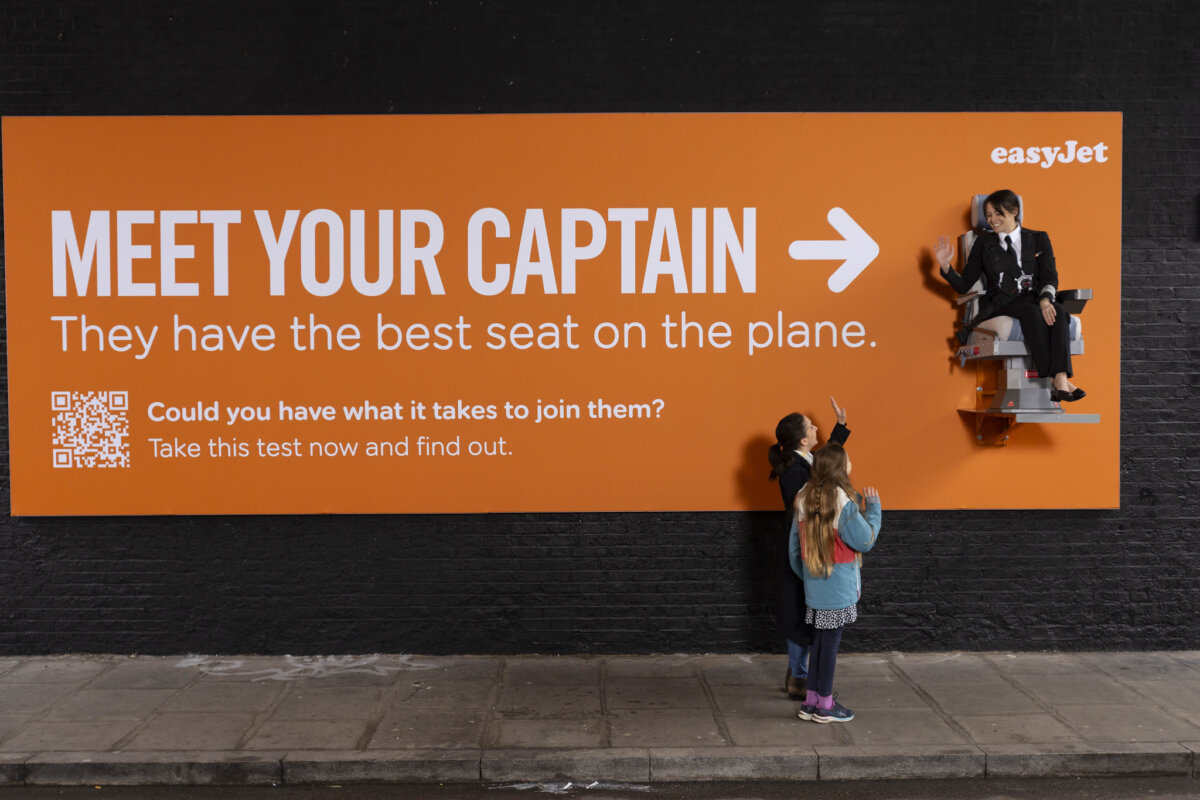
EasyJet’s latest OOH campaign flew high this year. Teaming up with agency Taylor Herring, the airline launched an interactive billboard featuring real-life Captain Sarah Acklerley suspended from the ad itself. The goal? To inspire young women to consider a career in aviation and challenge misconceptions about becoming a pilot.
The OOH display invited audiences to scan a QR code, taking them to a flight simulator experience and a new online test designed to spark interest in the role. Adding a human touch, Captain Acklerley answered live questions from curious onlookers, proving you don’t need a university degree—or wings—to start your aviation journey. We thought it was a creative, thoughtful approach to tackling underrepresentation in the cockpit.
WeRoad unwrapped holiday humour (and some truths)
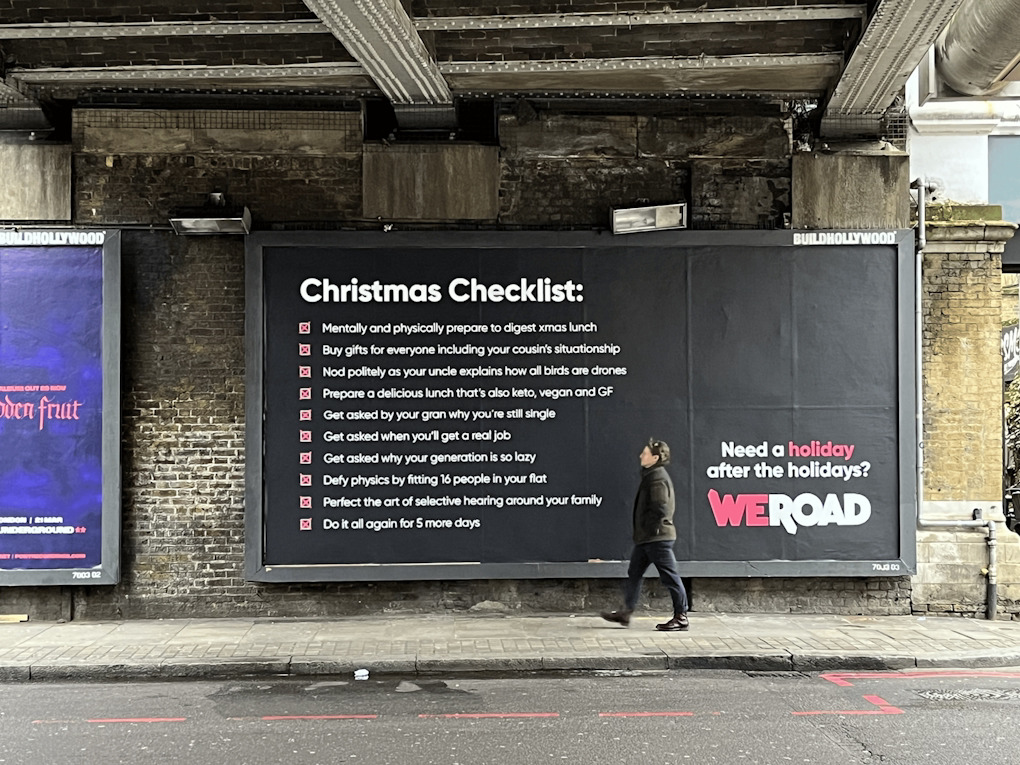
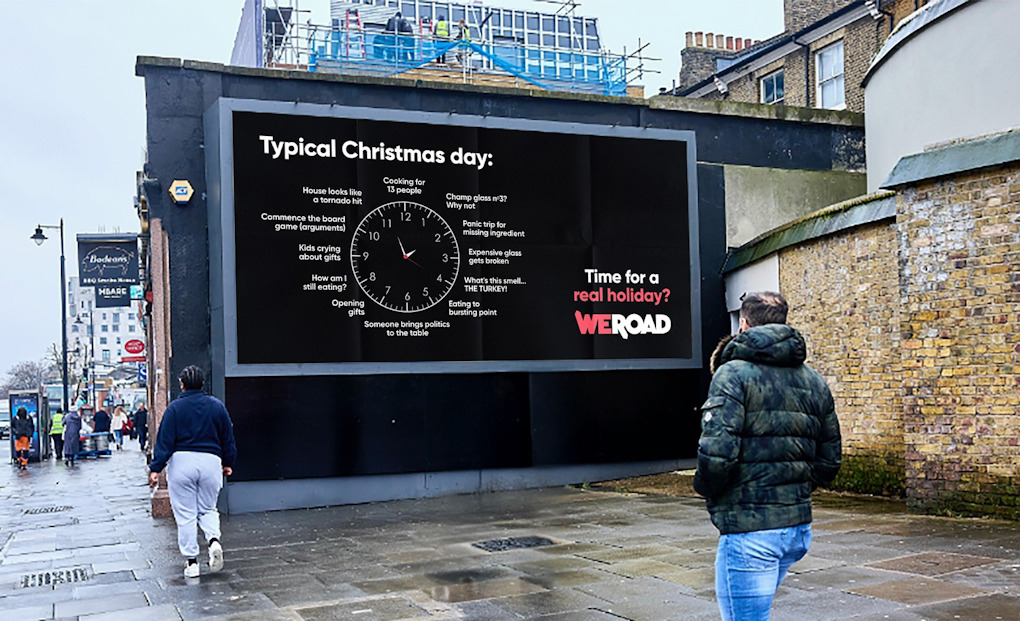
Listen, we love the holiday season, but we’ll be the first ones to admit that it’s also a lot. Enter U.K.-based tour operator WeRoad, who gave Christmas stress a spin with a series of billboards designed to resonate with overwhelmed hosts, overstuffed guests, and anyone ready to book a post-festive getaway.
The outdoor ads nailed some relatable holiday truths, featuring a “Christmas Checklist” packed with a never-ending to-do list leading up to the big day, and “Typical Christmas Day,” which captured the chaos of family dinner dynamics we all know too well. By turning holiday stress into a reason to escape, WeRoad cleverly invited us to swap post-Christmas chaos for a well-earned adventure (which we think is the best gift of all).
Dove called out harmful beauty standards being imposed on children
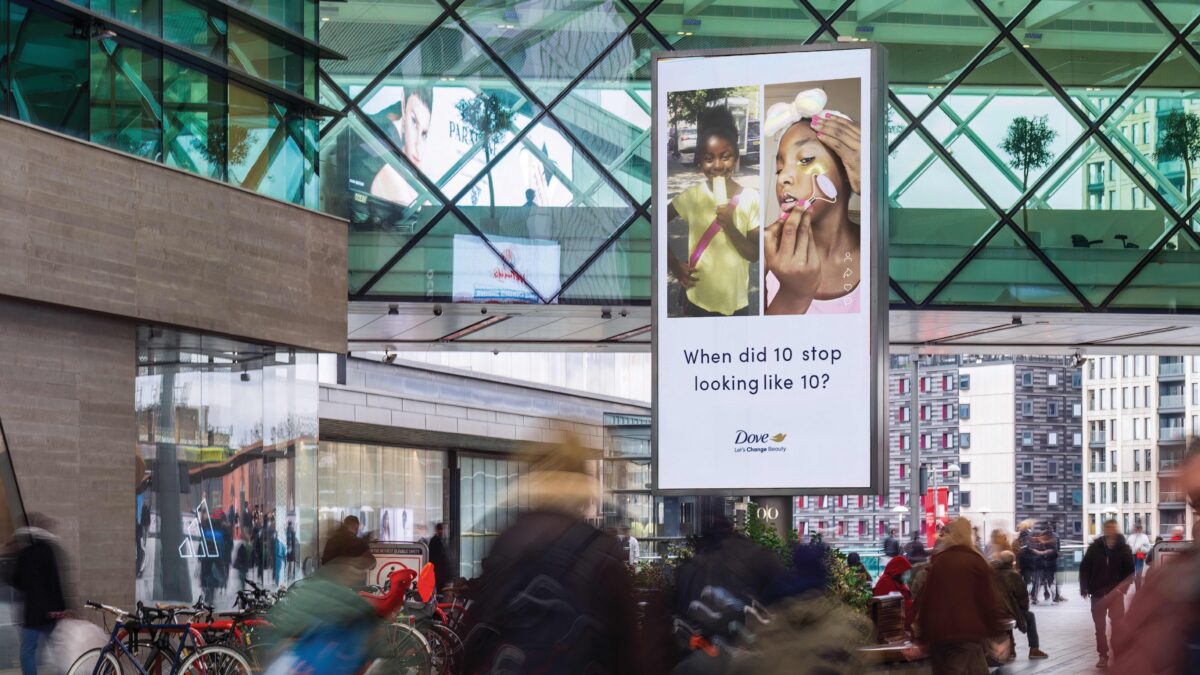
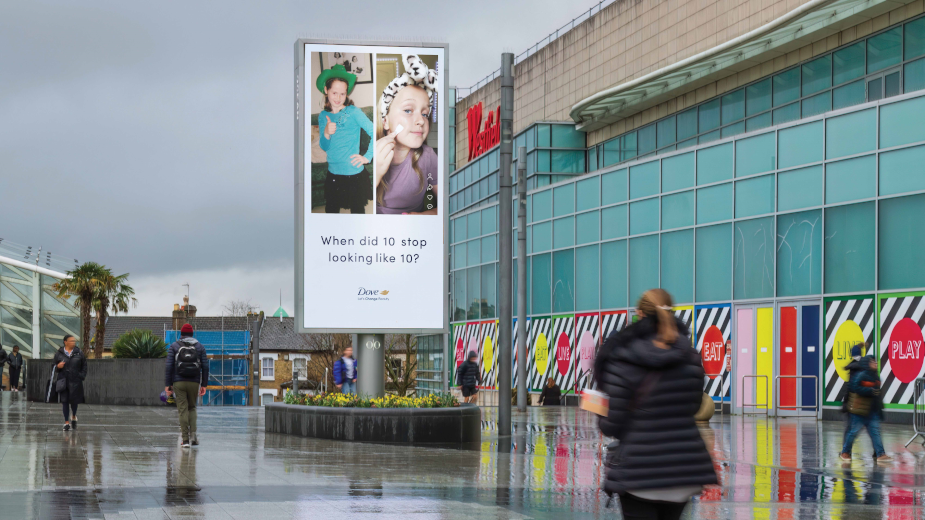
Personal care brand Dove’s 10 vs 10 campaign delivered a powerful message about the pressures social media places on young girls. Created by creative agency Ogilvy, it featured images of 10-year-olds enjoying carefree childhood moments—like singing karaoke and riding carousels—alongside unsettling visuals of the same girls mimicking adult skincare routines, including the use of anti-ageing products like retinol.
The OOH campaign, part of Dove’s #TheFaceof10 initiative, highlighted how social media drives harmful beauty trends, exposing children to unrealistic and age-inappropriate standards. It emphasized the lasting physical and mental harm these pressures can cause while urging parents and guardians to pay attention, serving as an important reminder that childhood should never be filtered.
